Beside the main functions described on the preceding chapters, the WE500R allows to configure other parameters in order to meet all customers requirements.
10.1. Connectivity
Connectivity, i.e. i all communication channels to the device, is a very important part of the system’s setting.
From the page Administration → Networking it’s possible to access the screenshots, that allow to configure and start-up the different network interfaces and the different services.
- LAN
- WLAN (if available)
- SIM
- HSPA
- SMS
- Ring
- Email
- RAS
- VPN
10.1.1. LAN connection
On the page Administration → Networking → LAN it’s possible to modify all parameters of the RJ45 Interface.
First of all the MAC address of the device will be displayed, with the option of using the LAN network on static IP address or on DHCP.
If the Static address will be selected, the following parameters must be set for the correct operation of the service:
- IP address static IP address assigned to the WE500R. Make sure that the address is available and not used on other devices.
- Netmask Subnet mask. A valid netmask must be entered, according to the specifications of the own local LAN.
- Gateway Network gateway
- DNS DNS that can be assigned to the WE500R ( max. 3)
After settings modification the WE500R requires a reboot in order to activate them. If the entered parameters are correct, it’s possible to enter the web interface of the WE500R (even remotely if the network allows it), to send emails and send data to a Portal/Server.
For further information regarding the status of the LAN connection, see page Diagnostics → Networking on section LAN Interface ( see 12. Diagnostic)
10.1.2. WLAN connection
The page Administration → Networking → WLAN is available only if, at order confirmation, the option wi-fi on USB Port has been selected.
In this case it’s possible to configure the WE500R in order to let it connect to an existing wi-fi network.
First of all it will be displayed the MAC address of the Wi-Fi device connected to the WE500R, and it will be given the possibility to choose between a static or dynamic Ip address.
Choosing the static IP address, all necessary parameters for a proper functioning of the service will be required.
- Choosing a static ip-address the following parameters must be set for a proper operation of the service:
- IP address: static IP address assigned to the WE500R. Make sure that the address is available and not used on other devices.
- Netmask: Subnet mask. A valid netmask must be entered, according to the specifications of the own local LAN.
- Gateway: Network gateway
Then the access data of the wi-fi network, where the WE500R has to get connected to, have to be defined:
- SSID: Complete name of the wi-fi network
- Protection: Encryption of the access key
- Key: type of key/password for the authentication
After clicking on Save, the We500 starts to scan the on-site available Wi-Fi networks. Once found the network with the previously set SSID, the WE500R will make the authentication using the indicated parameters.
If all operations will be successful executed, the indicators on the status panel will become green.
The WLAN network allows all operations permitted by the LAN network (remote access to the web server, data sending, email sending)
For further information regarding the status of the LAN connection, it’s possible to enter the page Administration → Diagnostics → Networking on section WLAN Interface (see 12. Diagnostic).
10.1.3. SIM parameters
Beside the parameters related to the connectivity, for the correct operating of the SMS and RING services, it could be necessary to define some SIM’s parameters according to the selected provider.
Those parameters are available on page Administration → Networking → SIMs.
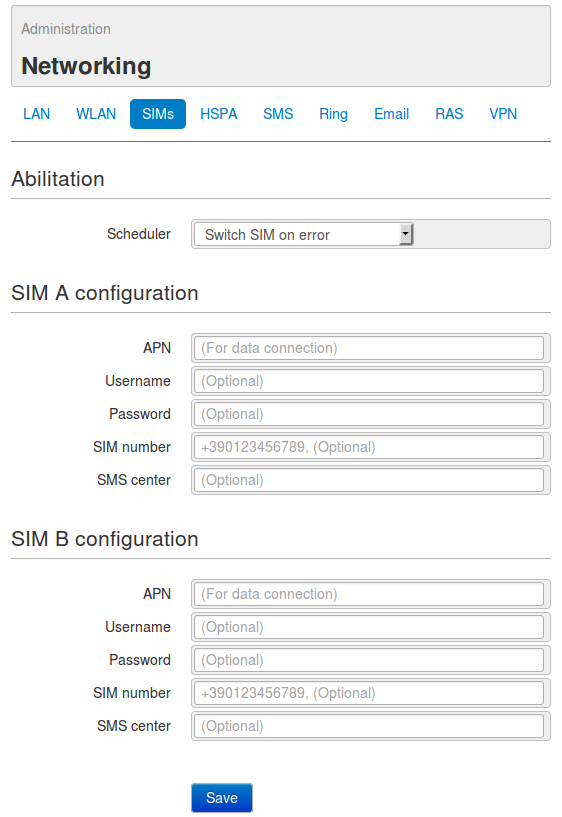
- APN: It’s the name of the access point of the GPRS/HSPA network. It changes according to the provider and to the contract with it (in some cases this may be not necessary). It’s an important parameter for a proper functioning of the connection. In case this should not be known, please contact the provider or Nethix Support.
- Username: it’s the username for the GPRS/HSPA connection. This field is normally blank, if it’s not differently required by the provider.
- Password: Password to be used for the GPRS/HSPA connection. This field is normally blank, if it’s not differently required by the provider.
- SIM number: It’s the Telephone number of the SIM inserted in the WE500R. This is not relevant for the functioning (this number is never used by the WE500R), but can be used for identifying the device later on.
- SMS center: It’s the SMS Service Centre of the Provider. With some types of SIM this could not be required. If this number is not known, please contact the Provider or Nethix Support.
WE500R includes two completely independent communication channels on mobile networks GSM/GPRS/UMTS/HSPA, that allow the parallel interaction with two different carriers.
The redundancy is provided through three different policies that can be selected according to the users needs:
- Switch on error Modem A is always working, but if a connectivity issue arises, such as continuos data connection failures or modem malfunctioning, it switches to modem B and remains on this modem until a new issue arises causing a switch back to modem A. This is the default policy.
- Time sharing between SIMs Each modem works for a given period of time. When that period timeouts, it switches to the other modem. The timeouts of each modem can be different. This policy could be useful when the users wants to consume the SIMs credit evenly. If modem A is currently working and presents an issue such as continuos data connection failures or modem malfunctioning, it switches to modem B and remains on this modem until its period times out. At that moment, it switches back to modem A.
- Priority to SIM A/Priority to SIM A One of the two modems, eg. modem A, is always working. If a connectivity issue arises, such as continuos data connection failures or modem malfunctioning, it switches to modem B, but it keeps monitoring modem A until it recovers. At that point it switches back to modem A and remains on it.
10.1.4. GPRS/HSPA connection
WE500R allows to establish a GPRS/HSPA connection in order to enter the web interface of the device and send data or emails, even if no Ethernet or Wi-Fi connections are available.
In order to activate the connection enter the page Administration → Networking → GPRS/HSPA.
Once enabled the service with a flag on the field Enable, it’s required to specify whether the connection must be always on or on demand.
- Always on: The WE500R will keep the connection always on. In case it should be interrupted (missing credit, Signal not available..) the connection will be restored as soon as possible.
- On demand: the connection is activated on request by an authorized user through a wake-up message (11. Commands) and after 15 minutes is automatically disabled. If the activated services require a connection for data sending or email sending.., the connection of the WE500R will automatically be closed at the end of the configured operations.
If the parameters have been properly configured, after a few minutes the GPRS/HSPA connection will be activated. On the status panel, positioned on the right side of the web interface, the GPRS/HSPA indicator will become green and beneath it the connection uptime and the relevant IP address will be displayed.
The WE500R offers also the possibility of associating the connection with a dynamic DNS service, choosing from the List of Providers available on section Dynamic DNS. This service allows to access the WE500R even if no static IP is available, since the device will be identified by the selected provider at every single connection, allowing the users to reach the web interface, just entering the hostname as configured on the browser. For further information see the Provider’s site or contact Nethix Support.
Make sure that the GPRS/HSPA connection has been successfully established, by checking if all necessary operations have been executed:
- Provide the WE500R with an enabled data SIM card (rechargeable or with flat tariff contract)
- Enter the APN (10.1.3. SIM parameters) for the Providers, that require it.
- Connect the antenna and check the strength of the available GSM signal.
- Enable the GPRS/HSPA service.
It’s possible to check the quality of the connection by using the diagnostic tool Ping (12.3. Ping).
Further information regarding the status of the connection can be found on page Administration → Diagnostics → Networking (12.2. Information of connectivity)
10.1.5. SMS
To enable/disable the SMS service go to page Administration → Networking → SMS.
Beside the flag for enabling the service, it’s possible to enable or disable the sending of pre-set SMS notifications (4. Events/Actions).
Enabling the service, it should be necessary to enter the SMS Service Centre number (10.1.3. SIM parameters).
Once enabled the SMS service, it’s possible to test the functioning through the section SMS test: entering a valid telephone number, complete with country code (for example +39NNNNNNNNNN for Italy), the WE500R will try to send an SMS with the following text ” Test message from WE500R “.
For granting the proper functioning of the SMS service, allowing the users to communicate with the WE500R and the WE500R to send alarm notifications, the procedure below must be carefully carried out:
- Enter the SMS Service Centre (10.1.3. SIM parameters).
- Enable the SMS service as described before
- Enable the SMS sending on event (field Send events on Administration → Networking → SMS)
- Define at least one user with activated SMS sending/receiving functions (9. Users)
- Create one or more events as Send SMS action (se 4. Events/Actions).
- Make sure that the SIM is properly inserted and with enough credit.
- Make sure that the antenna is properly connected and that the available signal is strong enough.
All sent and received SMS can be displayed on page Status → Services → SMS: the first page to be entered will show the SMS received by the device.
In the table the following information will be available:
- Number: shows the Phone number of the SMS sender
- Reception date: displays the date and time when the WE500R has received the message
- Text: contains the text of the received message
The button Refresh can be clicked at any time in order to update all information; Empty box for deleting all messages stored on Inbox.
Clicking on the drop-down menu on the top of the table, it’s possible to pass from Inbox to Outbox.
On this table is possible to display all the messages not yet delivered by the WE500R.
The available information are the following:
- Number: refers to the phone number of the message receiver
- Creation date: shows the date and time when the message has been created
- Text: displays the text of the message
The button Refresh can be clicked at any time in order to update all information; Empty box for deleting all messages available on Outbox (such messages won’t be delivered).
Clicking on the drop-down menu on the top of the table, it’s possible to pass from Outbox to Sent.
On this table are displayed some information regarding the SMS already delivered by the WE500R:
- Number: shows the receiver of the delivered messages
- Send date: displays the date and time when the We500 has delivered the message
- Text: contains the text of the sent messages
The button Refresh can be clicked at any time in order to update all information; Empty box for deleting all messages stored on Sent.
10.1.6. Ring
One of the actions that can be associated to an event (incoming or outgoing) is the RING, that can be sent or received to/by one or more registered users (4. Events/Actions).
To enable the Ring Function go to page Administration → Networking → Ring and enable the field Enable rings.
Once enabled the function and clicked on Save, it’s possible to use this option.
To make sure that this function is properly operating, it’s recommended to check the following points:
- Enable the Ring function, as described above.
- Define at least one user with valid telephone number, enabled to receive/send rings (see 9. Users)
- Make sure that the SIM card is properly inserted and voice call enabled.
- Make sure that the SIM card has enough credit to send rings.
- Make sure that the GSM antenna is properly assembled and that the signal is strong enough
10.1.7. Email
Before proceeding with the configuration of the WE500R, it’s necessary to make the following:
- After the selection of the provider (Gmail, Yahoo, Hotmail etc..) enter the provider’s site and create a new valid mail account
- In the site of the provider, collect all information regarding the parameters to be entered in order to configure the mail service
Once a new account has been created, it’s possible to proceed with the configuration of the WE500R, enabling the outgoing emails, the incoming emails or both of them from the page Administration → Networking → Email.
On the section Outgoing mail setup the parameters required for the email sending from the WE500R must be set:
- Enable outgoing mail service it enables/disables the email sending service.
- Server type it allows to choose the type of mail server (at the moment only SMTP available)
- Server address it’s the address of the mail server ( for example smtp.gmail.com)
- Port it’s the number of the access port (for example 587)
- Email address the email address associated to the WE500R. This will be the address visualized by the receivers of the emails.
- Username It’s the username of the mail account associated to the WE500R.
- Password It’s the password of the mail account associated to the WE500R.
- SSL-TLS Encryption
Once clicked on the button Save, a new section, called Outgoing mail test, will appear on the bottom of the page: from this section it’s possible to send a test email to any address.
A properly configured mail service allows the WE500R to send notification mails to the configured users (see 4.2.1. Send Email)or to send scheduled reports (see 7.2.4. Email report).
On the section Incoming mail setup the parameters required for the email sending from the WE500R must be set:
- Enable incoming mail service: Enables/disables the email receiving service.
- Server Type: Type of mail server (at the moment only POP available)
- Server address: the address of the mail server (for example pop.gmail.com)
- Port: Number of the access port (for example 995)
- Email address: the email address associated to the WE500R. The commands sent by the authorized users should be sent to this address.
- Username: It’s the username of the mail account associated to the WE500R.
- Password: It’s he password of the mail account associated to the WE500R.
- SSL-TLS: Encryption
A properly configured mail service allows the authorized users to send commands to the WE500R (see 6.2. Set/Get via SMS/Email commands and 11. Commands)
All sent and received emails can be visualized on the page Status → Services → Email.
The first page shows the emails received by the device:
On the displayed table the following information are available:
- Mail address: the mail address of the sender
- Reception date: Date and time when the WE500R received the email.
- Text: text of the received email.
At any time it’s possible to click on the button Refresh in order to update the information, or Empty box, in order to delete all messages available inside Inbox.
Clicking on the drop-down menu on top of the table, it’s possible to pass from Inbox to Outbox.
On this table it’s possible to visualize all the emails not yet delivered by the WE500R. The following information will be shown:
- Mail address: in this filed is shown the address of the receiver of the mail.
- Creation date: It’s the date and time of the mail creation
- Attempts: it shows the sending attempts made by WE500R
- Text: it displays the text of the mail
At any time it’s possible to click on the button Refresh in order to update the information, or Empty box, in order to delete all messages available inside Outbox ( deleted mails won’t be sent out)
Clicking on the drop-down menu on top of the table, it’s possible to pass from Outbox to Sent.
On this table are displayed some information referred to the email already sent by the WE500R:
- Mail address: in this filed is shown the address of the receiver of the mail.
- Creation date: It’s the date and time of the mail delivery
- Attempts: it shows the sending attempts made by WE500R before the successful delivery
- Text: it displays the text of the sent mail
At any time it’s possible to click on the button Refresh in order to update the information, or Empty box, in order to delete all messages available inside Sent.
10.1.8. VPN
From the page Administration → Networking → VPN it’s possible to enable the VPN service to Nethix Portal or to a corporate VPN server.
It’s possible to enable the VPN according to two modes:
The automatic VPN is used to build up a secure connection to Nethix Portal. The automatic VPN allows also to build up a secure and encripted connection between a PC and the device.
For further information about the use and the advantages granted by the VPN service, see the relevant manual manual.
On the other hand the manual VPN is used to build up a secure connection to a external VPN service, compatible with OpenVPN clients.
The parameters to be configured in order to enable a manual VPN are the following:
- VPN mode: modality of the VPN, in this case: Manual
- VPN configuration: this is the configuration file, released by the selected VPN Service Provider
- VPN Service user: the username for authenticating on the VPN service
- VPN Service password: the password for authenticating on the VPN service
10.1.9 NAT
From the page Administration-> Networking->NAT it’s possible to enable the NAT function and set the rules for the port forwarding.
Enabling the function NAT, the device will run in gateway mode, i.e. it will provide connectivity through the interface, selected by the connected devices.
Setting the routing rules it’s possible to forward to a defined IP address and port, the traffic coming to the WE500R.
For instance:
WE500R is inside a LAN network and has the local IP address 10.0.0.1 and the public IP address 1.2.3.4 (for entering internet).
It is necessary to reach the port 80 of another device (connected with WE500R) having local IP address 10.0.0.2.
It’s possible to set the following rule:
- Source port: 8080
- Destination IP: 10.0.0.2
- Destination port: 80
According to this rule, by typing 1.2.3.4:8080 in the address bar of your internet browser, you will be redirected to the port 80 of the device having IP 10.0.0.2.
10.2. System settings
On section Administration → General Setup it’s possible to define some general settings of the device and enable some additional services.
10.2.2. Date and time
On the page Administration → General Setup → System**under the section **Time/Date, it’s possible to set the date and time of the device:
- Installation time/date: It states the date and time, when the device has been installed. This information has no influence on the functioning and has the only reason of identifying the installation.
- Set time/date: It allows to set the date and time of the device.
- Enable NTP: it enables the automatic synchronization of time. Once per day and at every reboot, the WE500R will connect to the server in order to update date and time precisely, according to the relevant timezone.
- Select time-zone: it allows to set the timezone of the device.
It is also possible to specify a custom NTP server, by clicking the Advanced link.
10.2.3. Web-cam
It’s possible to enable a web-cam to be associated to the device, in order to display the captured image after the login. The image will be refreshed according to the pre-set timing. The webcam doesn’t have to be necessarily connected to the WE500R via Ethernet, but it must be available via LAN, Wi-Fi, GPRS or HSPA.
In order to define the web-cam parameters, go to page Administration → General Setup → Site Configuration, on the section Web-cam:
- Webcam: it enables the function
- Image URL: it refers to the network path for the WE500R to be connected to and receive the web-cam images.
- Refresh: Image refresh time expressed in seconds. The refresh time depends also by other factors, as for example the speed and the quality/resolution of the connection.
- Timestamp: enabling this function, the date and time of the image acquisition will be shown.
10.2.4. GPS
The WE500R allows to get or to set the geographical coordinates, in order to show through Google Maps the precise location of the installed device. For activating the GPS function, go to page Administration → General Setup → Site Configuration on section GPS service.
When the function has been activated, it’s possible to decide how to use it, selecting on the field Coordinates type between the two options Manual and GPS.
- Manual: it allows to set manually the device coordinates. The fields Latitude and Longitude will be filled in with the coordinates acquired from Google Maps.
- GPS: it allows to acquire the geographical coordinates directly from a GPS sensor, connected through the serial 232 of the WE500R. The GPS sensor must be requested at order confirmation, since it’s considered as an optional accessory.
After a proper configuration of the required parameters, irrespective of the selected mode, it’s possible to display the map on page Status → Site.
10.2.5. Web interface personalization
Some graphical personalizations of the web interface of the device are possible from page Administration → General Setup → Web Interface, and will be valid for all the users.
- Logo: this allows to choose an image to replace the Nethix logo on the left top of the page.
- Prevalent color: Primary color of the page. (RGB hexadecimal color, for example: #007BC5)
- Secondary color: Secondary color of the page. (RGB Hexadecimal color, for example #009FE9)
- Font color: Color of the text. (RGB Hexadecimal color, for example #007BC5)
- White icons: Disabling this option, all the icons of the header (power-off, reboot, logout) will be displayed in black.
- Background color: Color of page’s background .(RGB Hexadecimal color for example #007BC5 )
- Footer: it allows to configure the footer at convenience (HTML code is allowed)
Clicking on all coloured fields, a “color picker” will allow to select the desired color and automatically insert the relevant hexadecimal value.
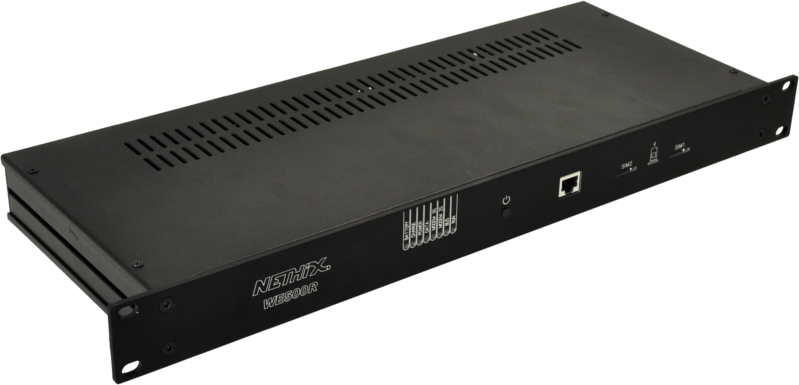
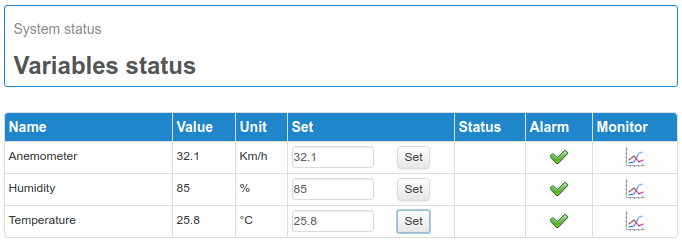
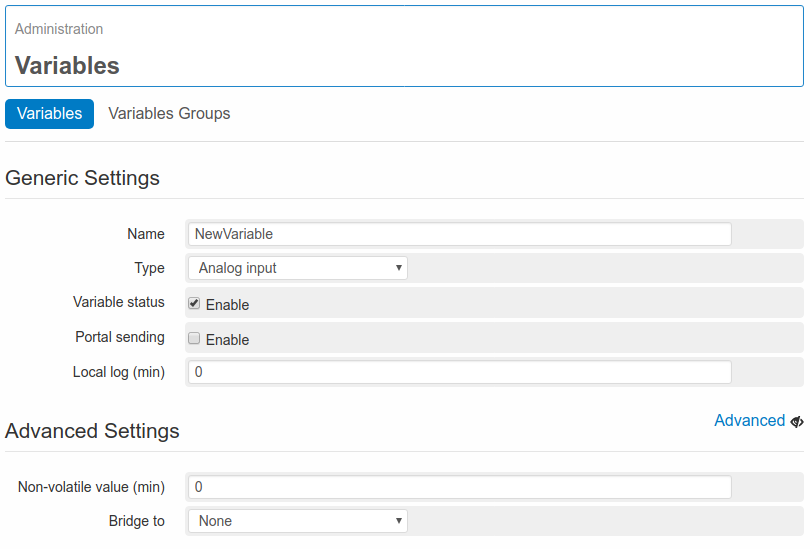
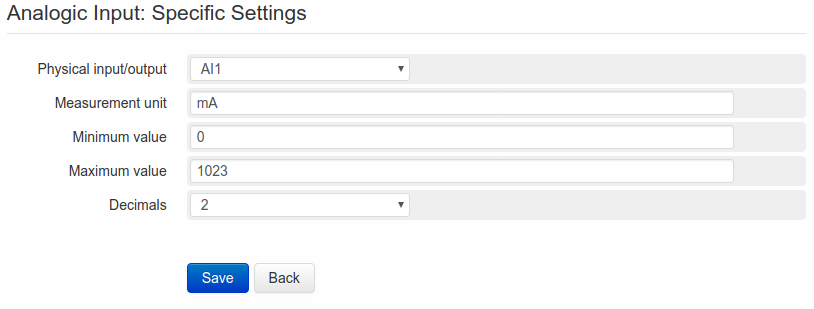
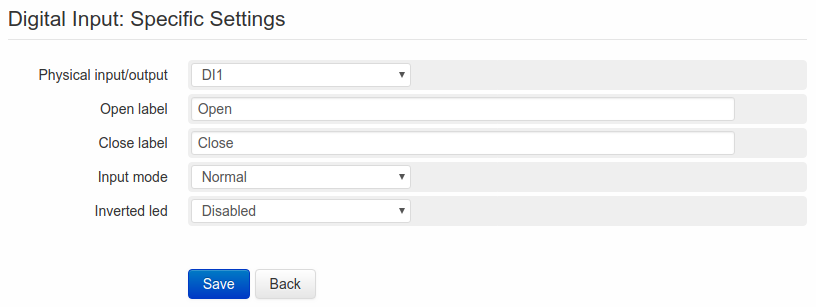
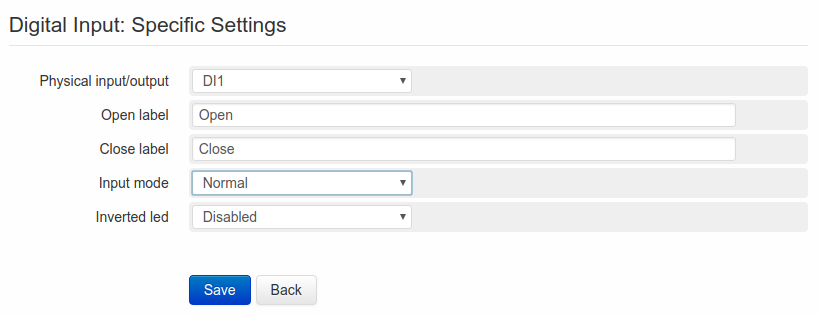
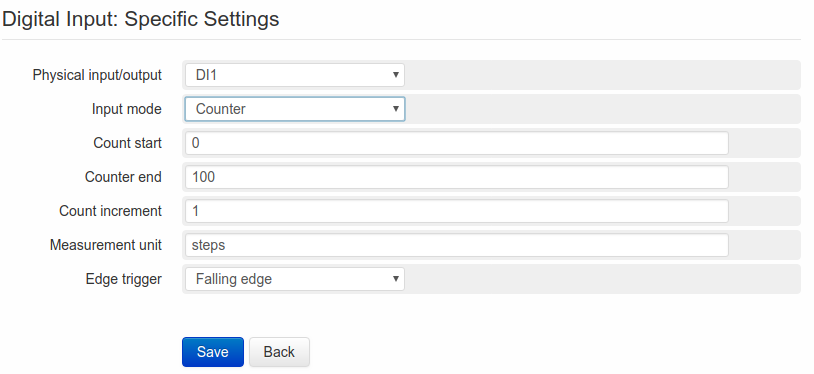
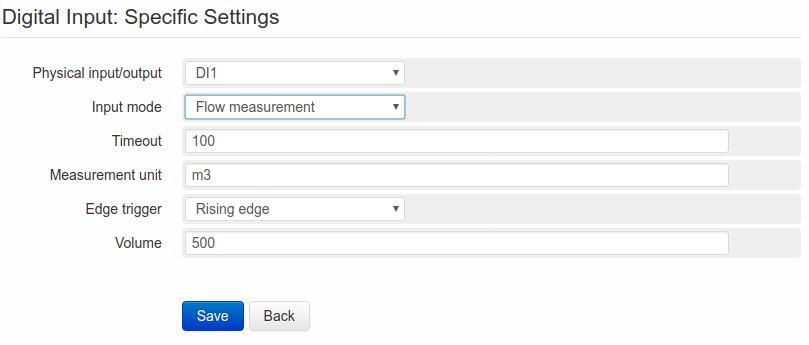

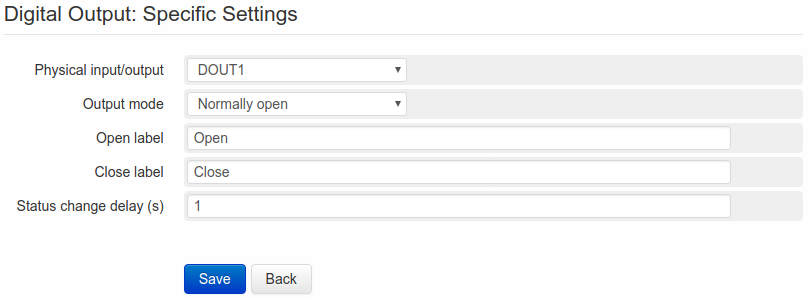

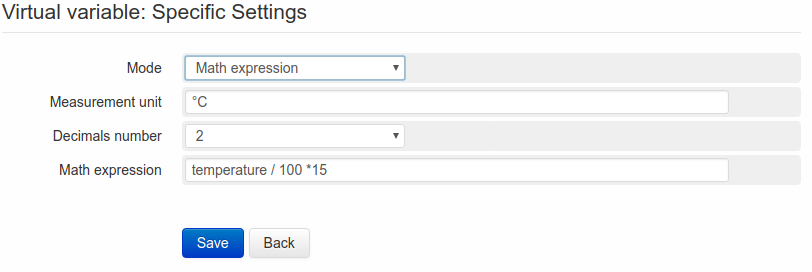

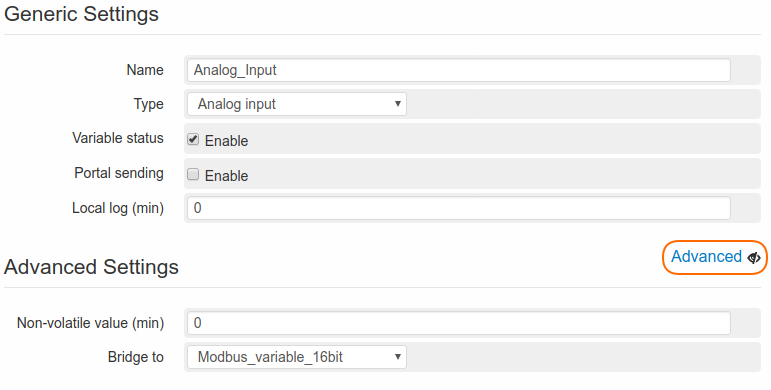
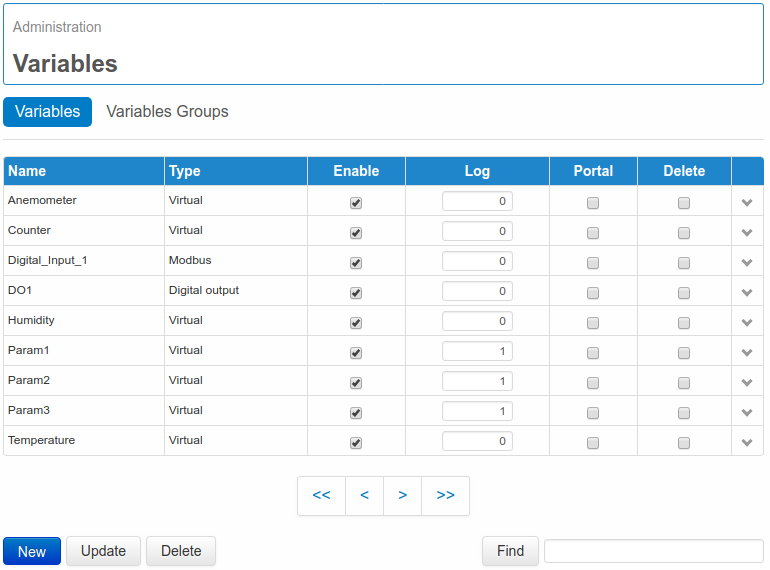
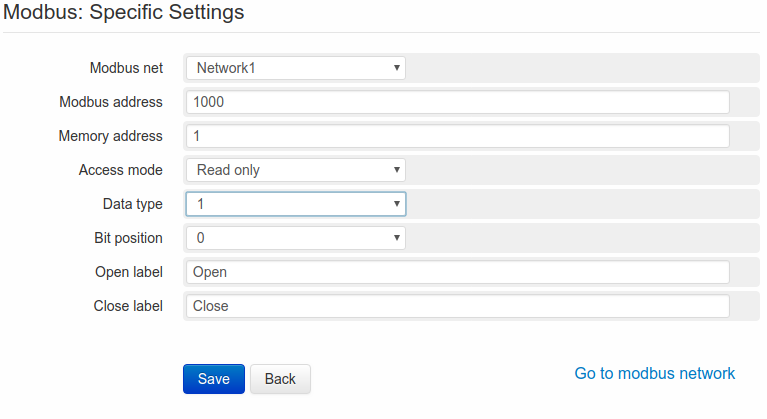
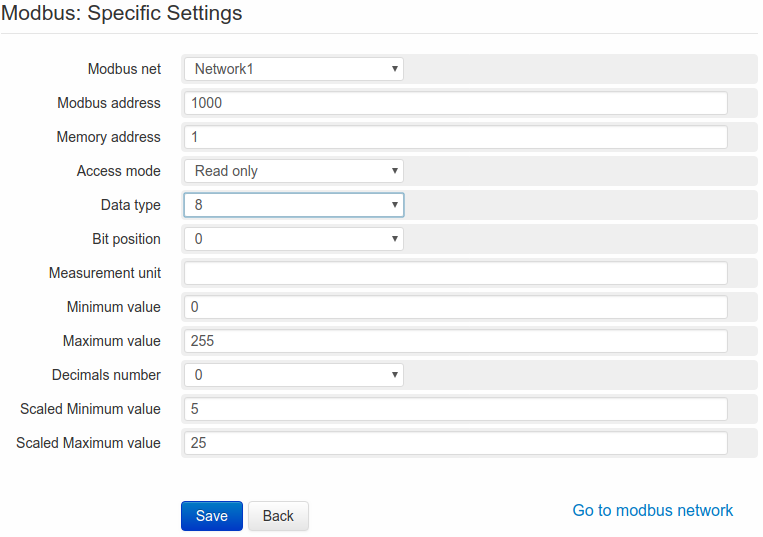
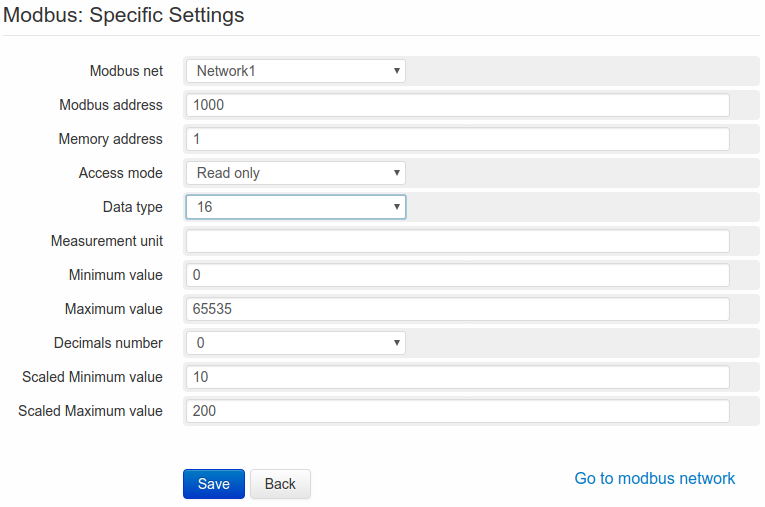
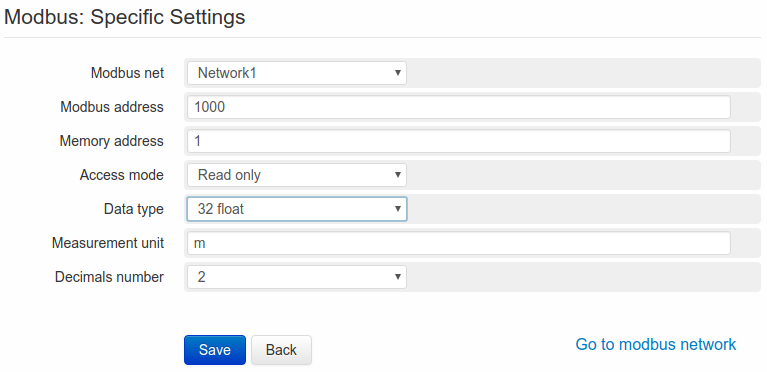
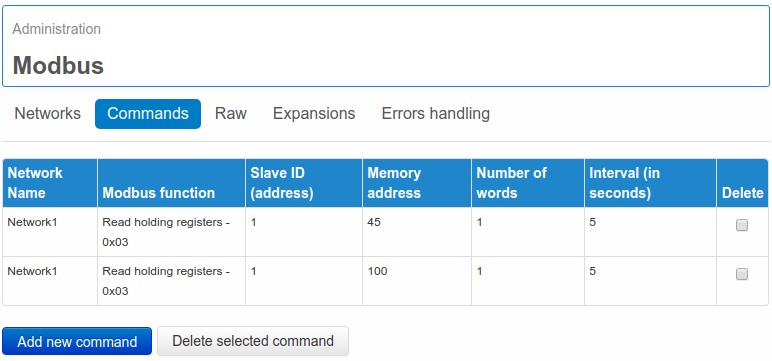

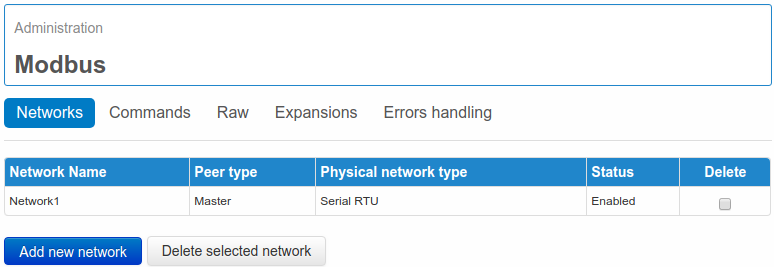
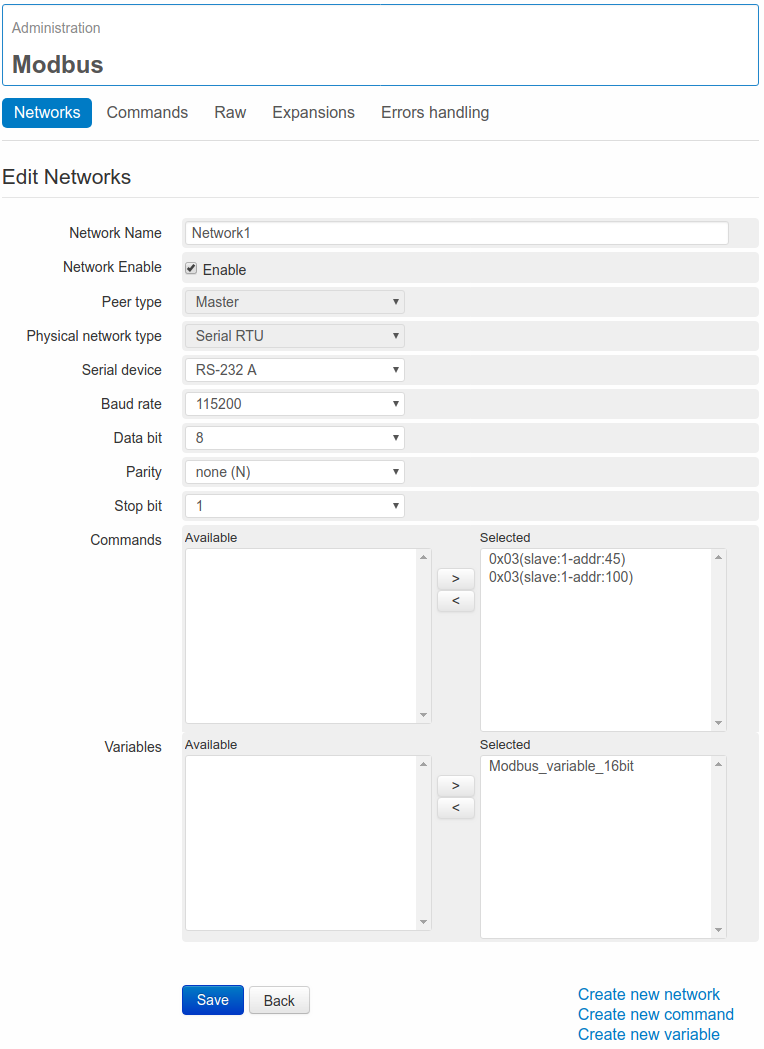
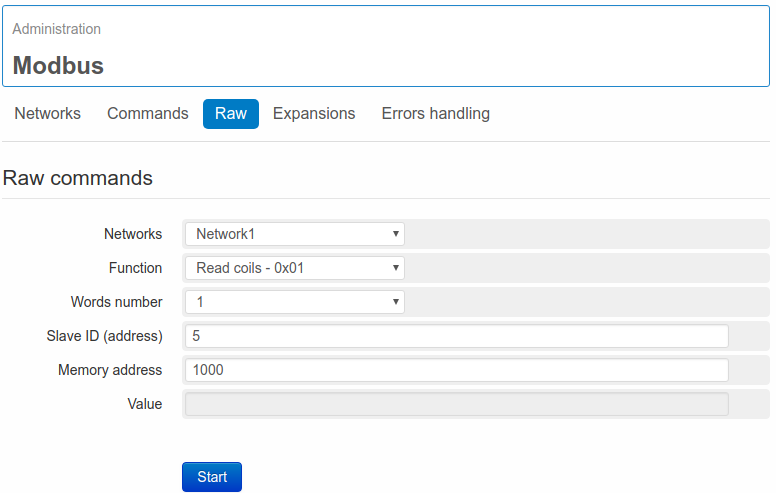
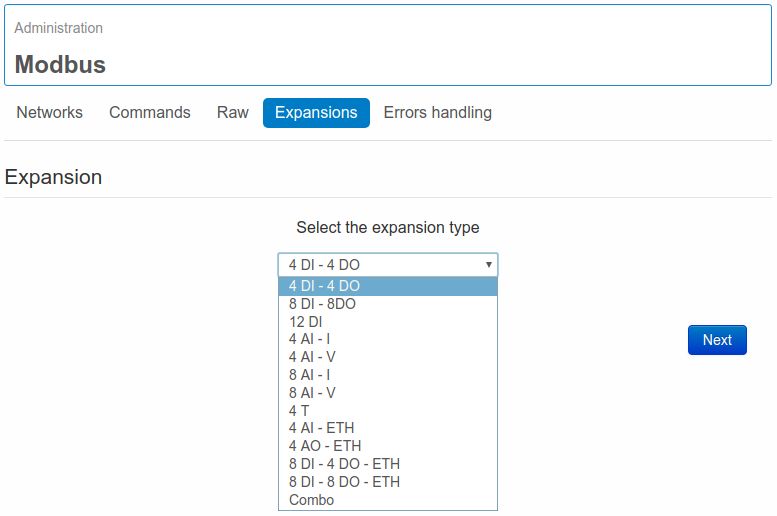
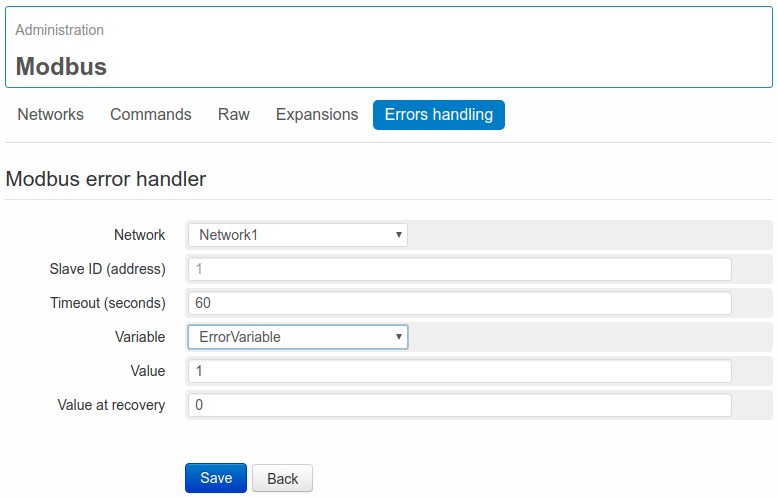

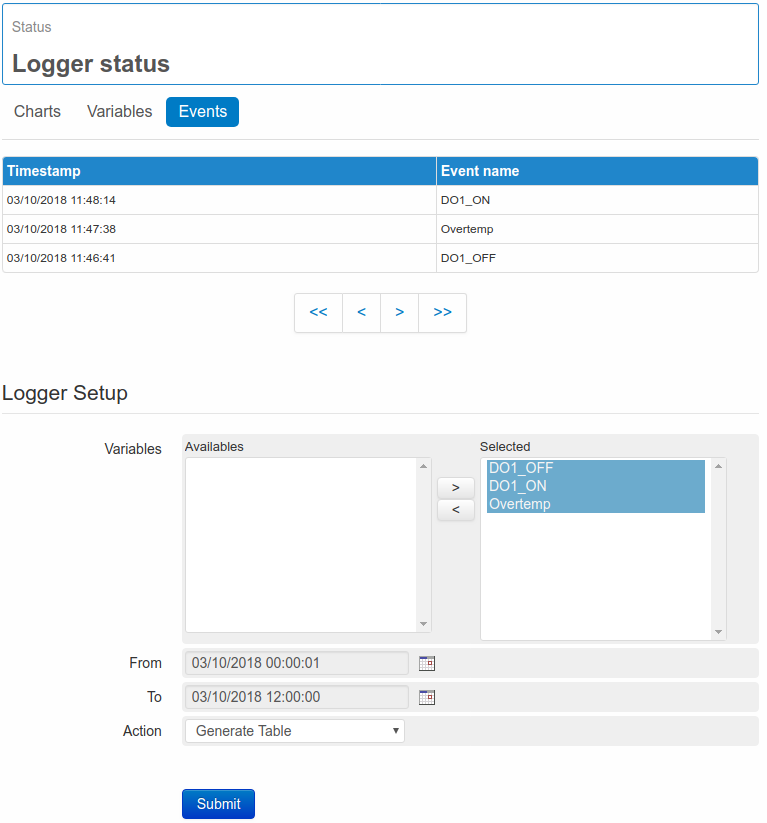
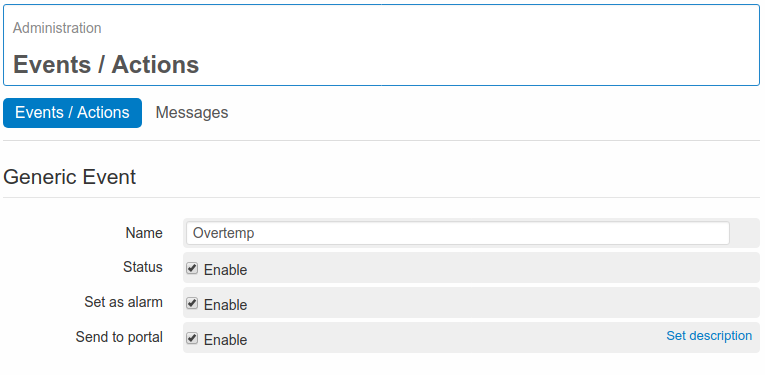


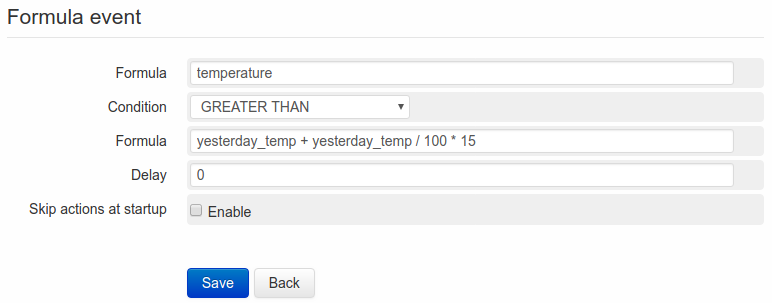
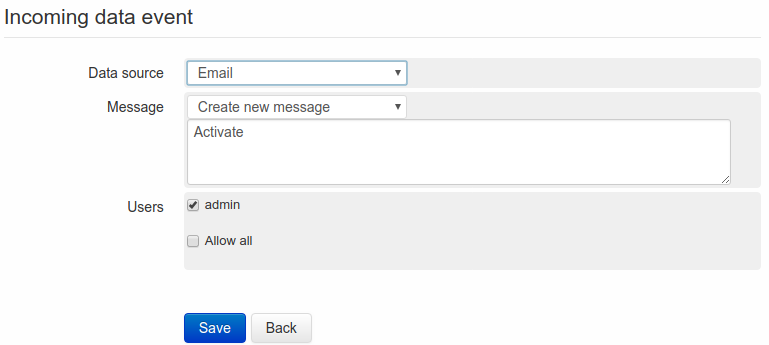
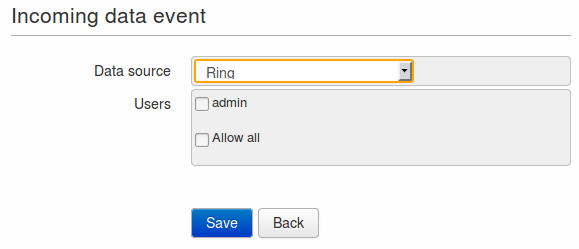

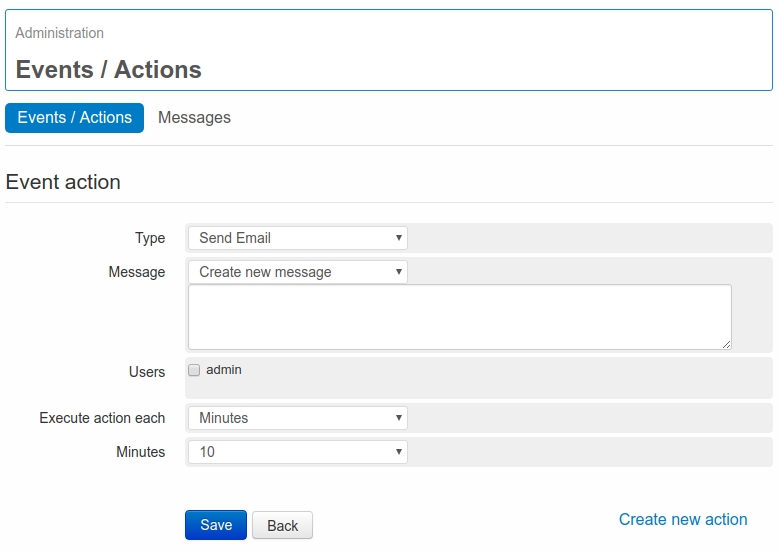
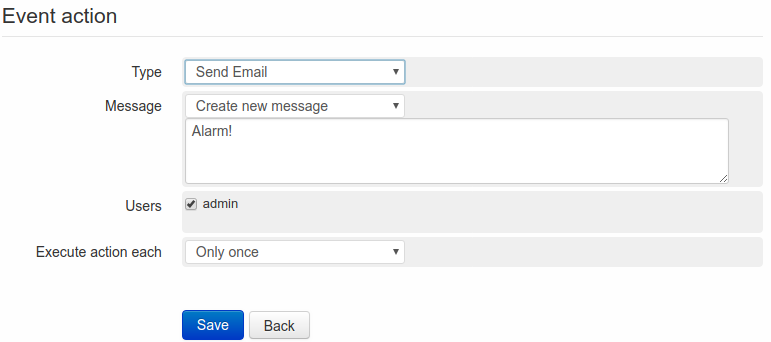
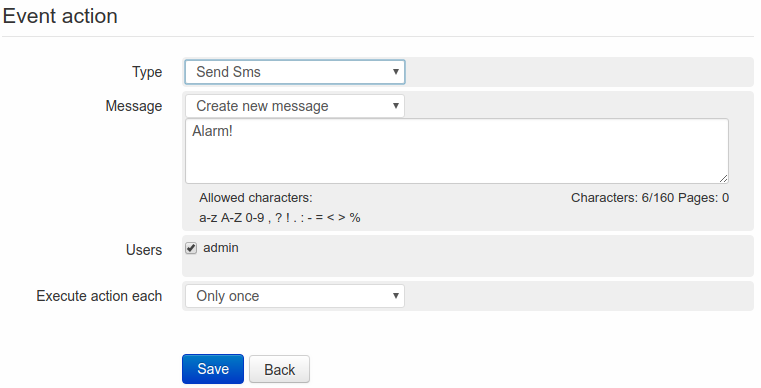

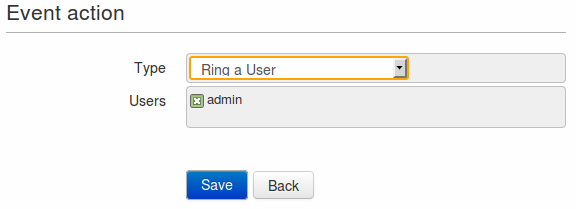


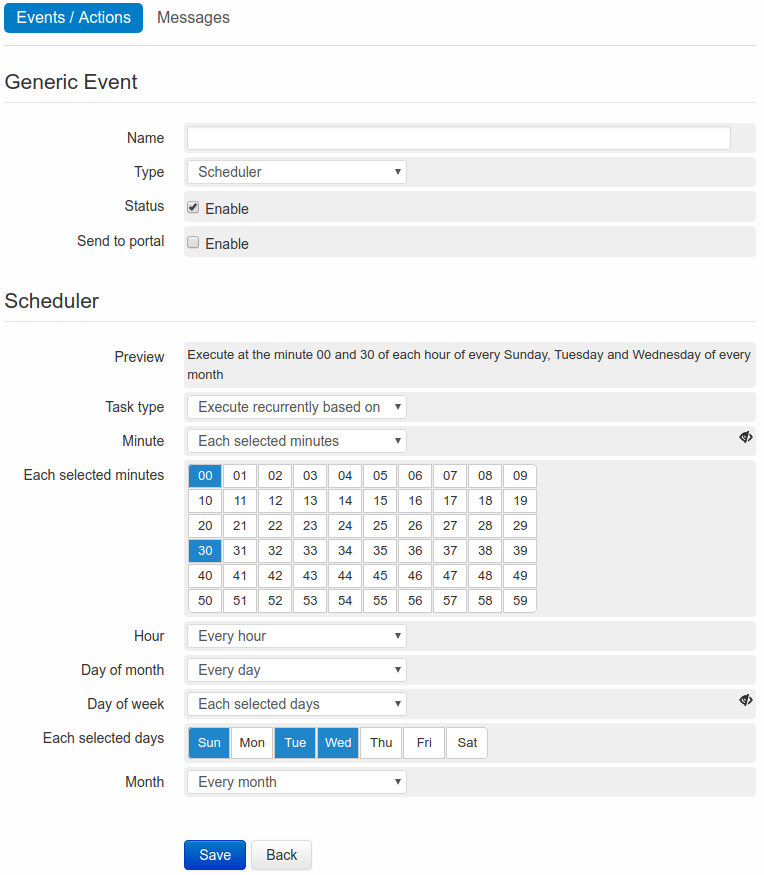
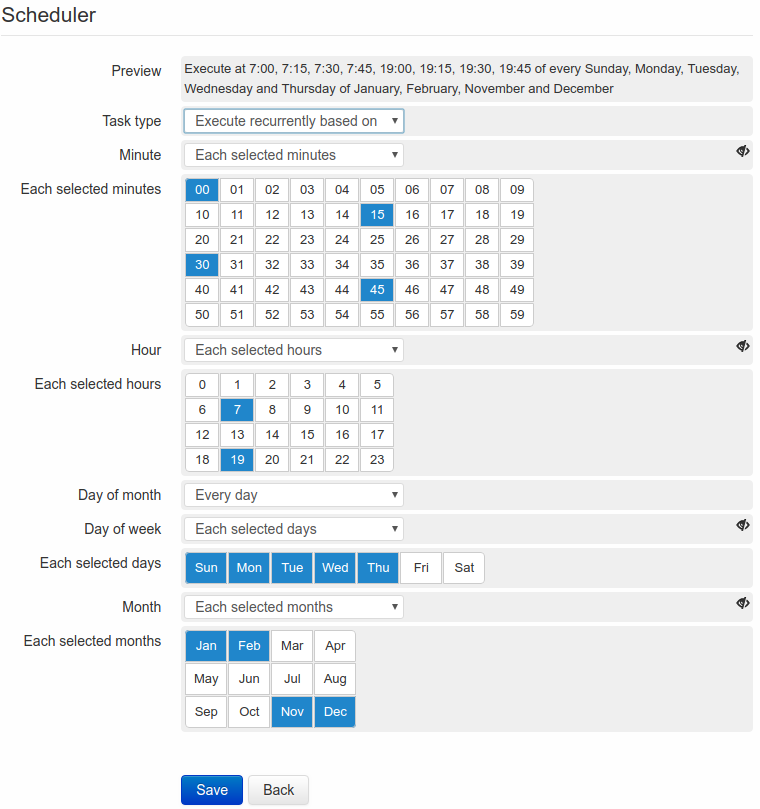
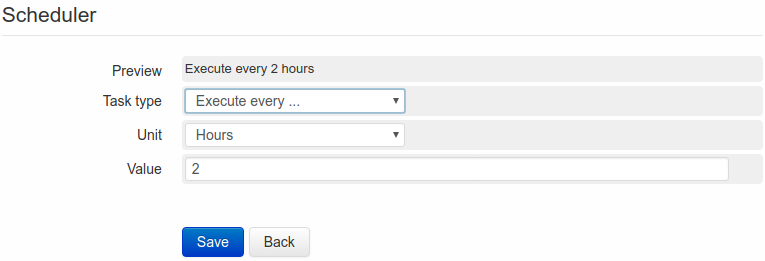

 located on the right side of the field Date, the calender will open and allow to select the hour, the day, the month and the year, when the action has to be executed.
Once the action has been executed, the event will be deleted.
located on the right side of the field Date, the calender will open and allow to select the hour, the day, the month and the year, when the action has to be executed.
Once the action has been executed, the event will be deleted.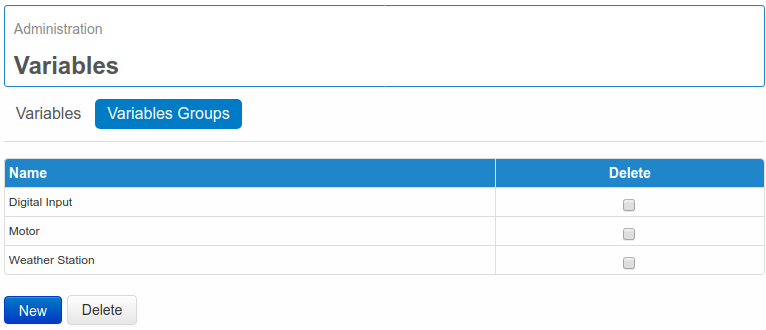
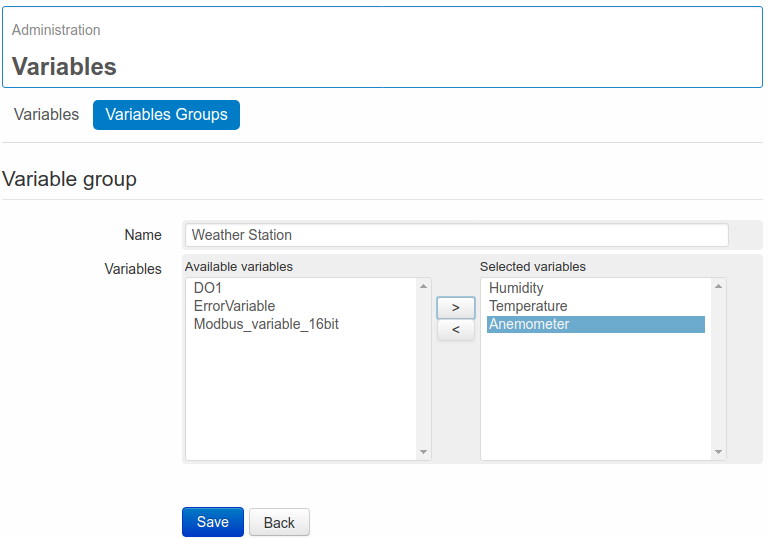
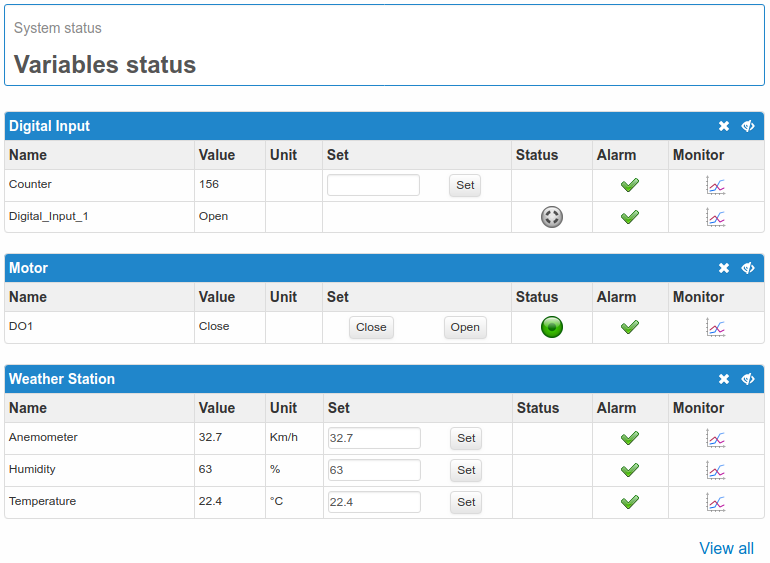


 or gray
or gray  , according to the status and configuration of the variable.
, according to the status and configuration of the variable. indicates that no active alarms are available. The icon
indicates that no active alarms are available. The icon  indicates on the other hand the presence of an event configured as an alarm.
indicates on the other hand the presence of an event configured as an alarm.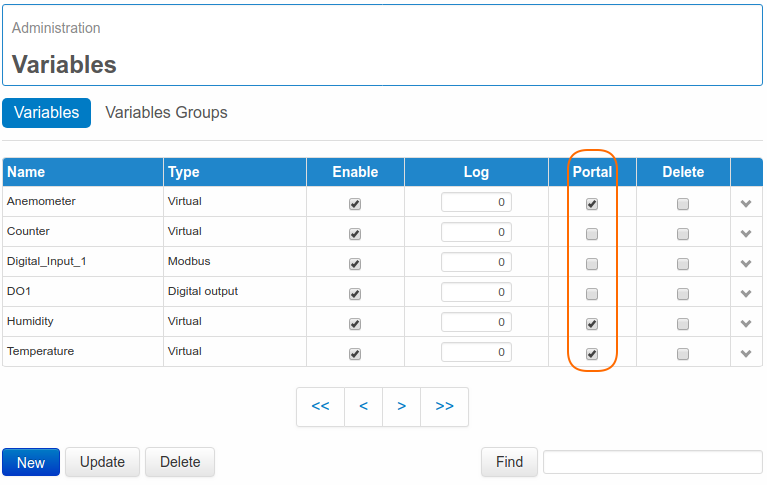

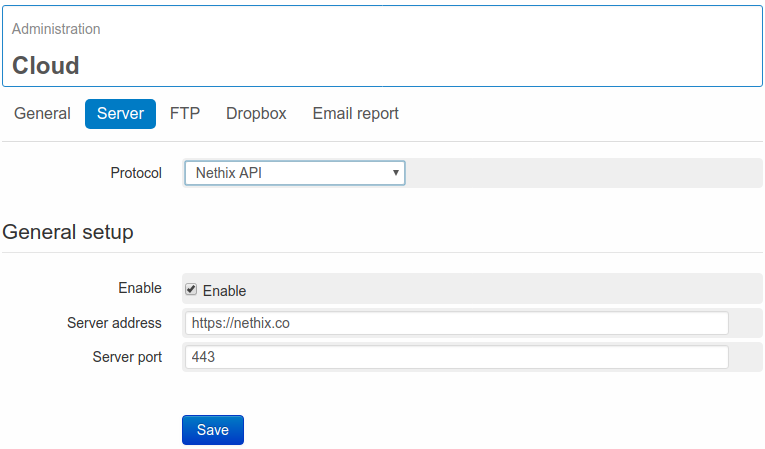
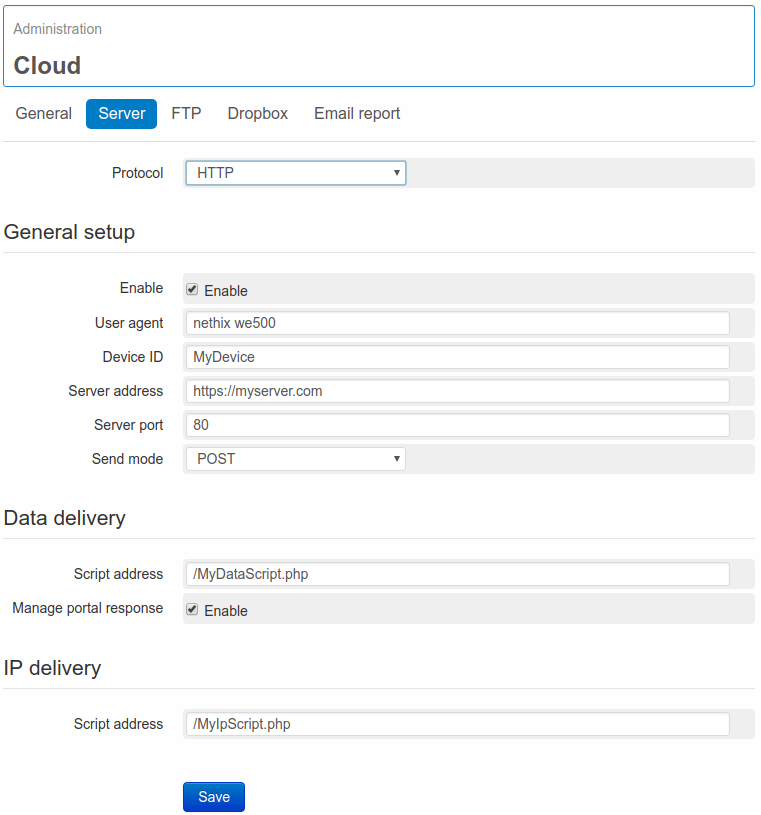
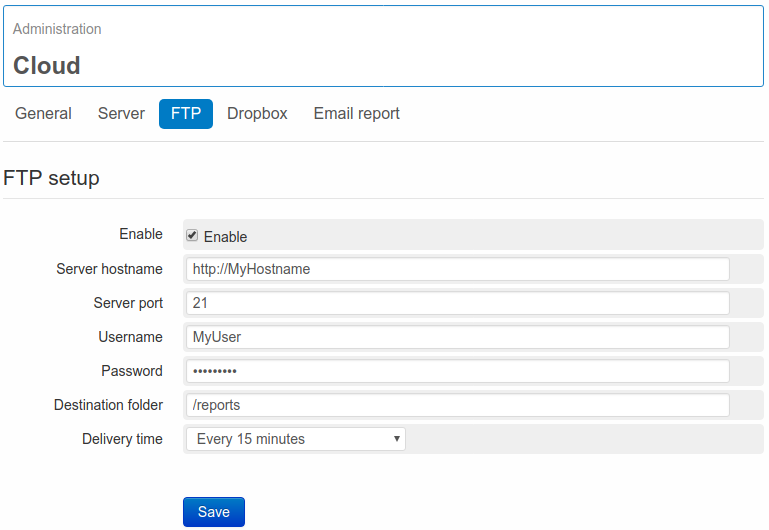
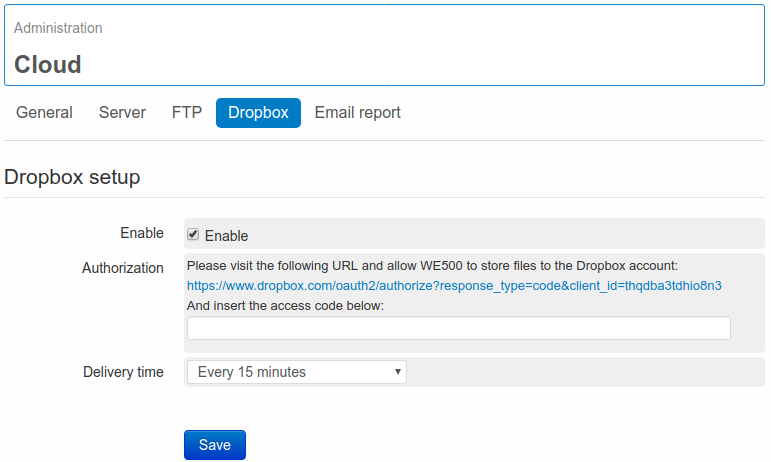
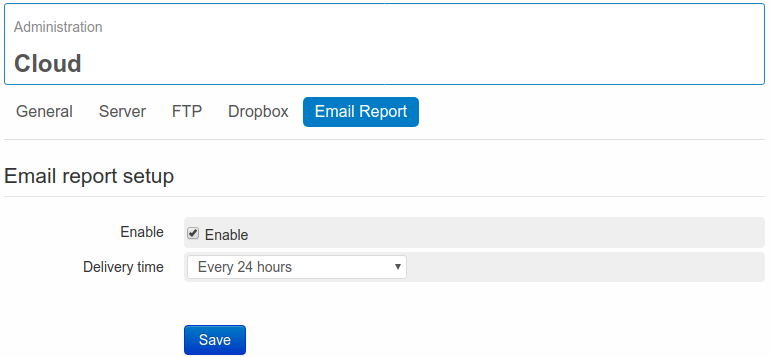

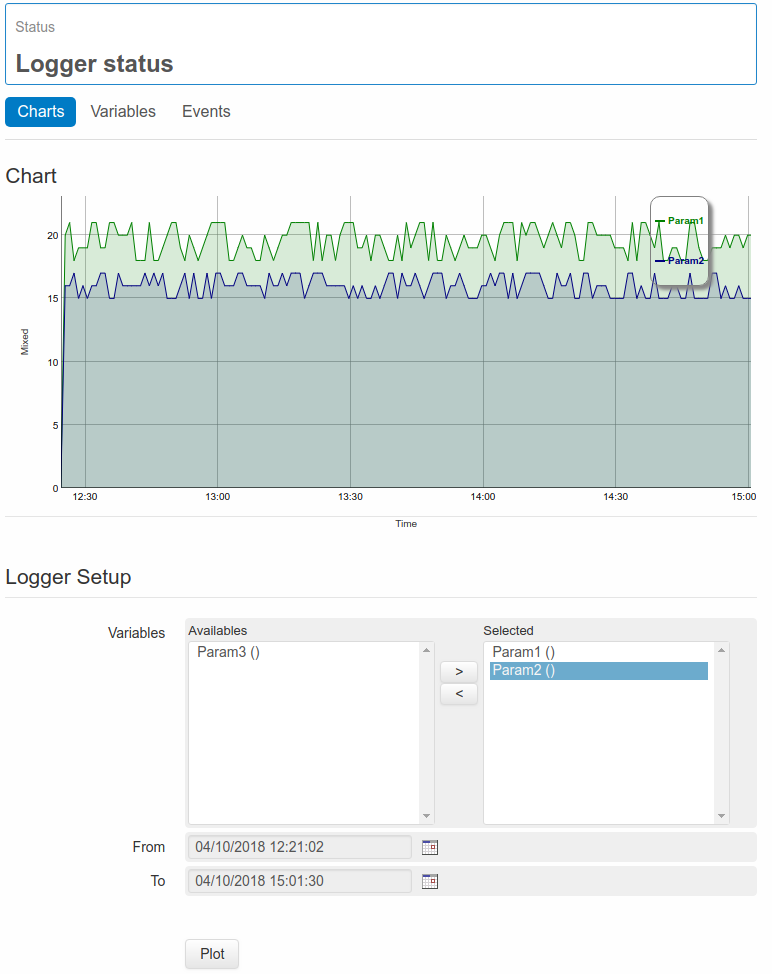
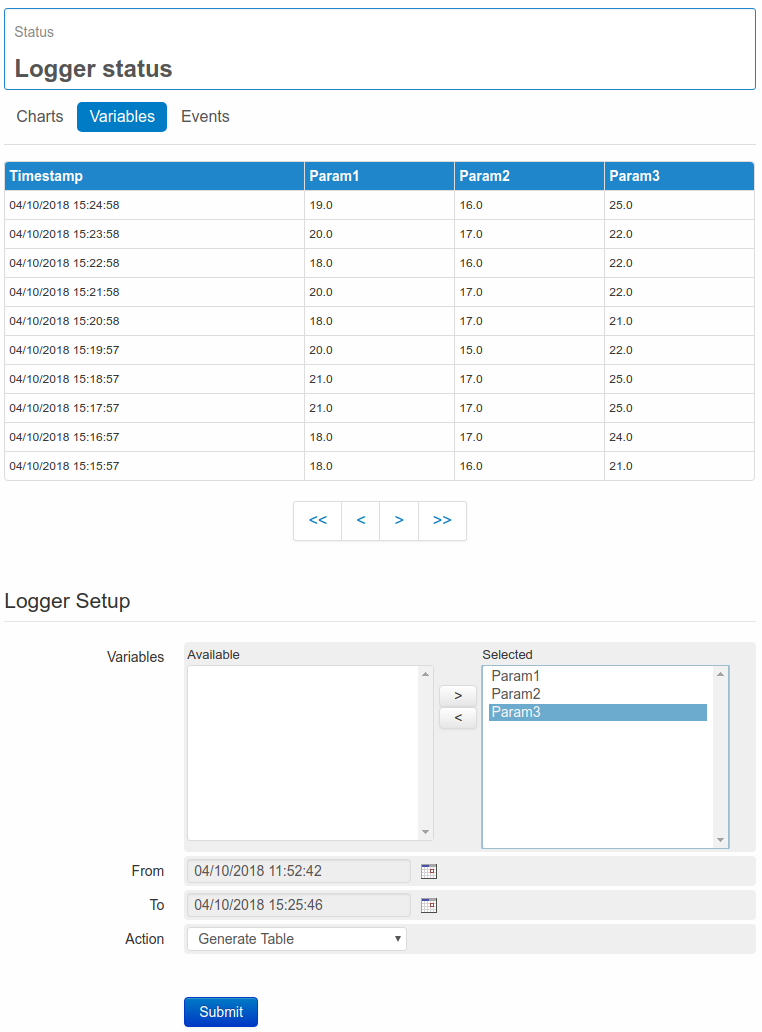
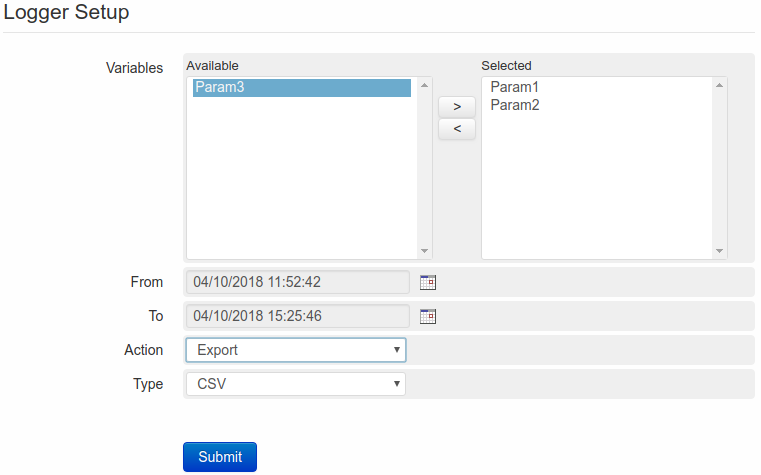

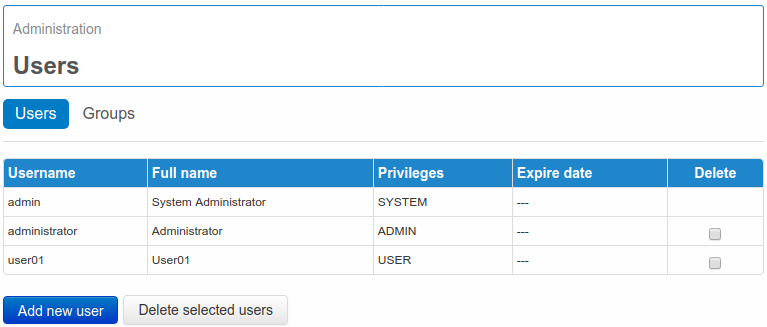

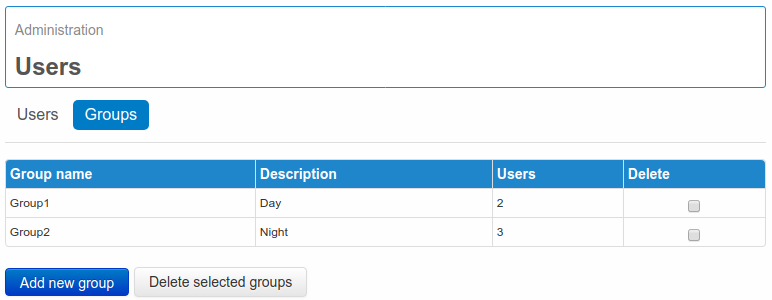
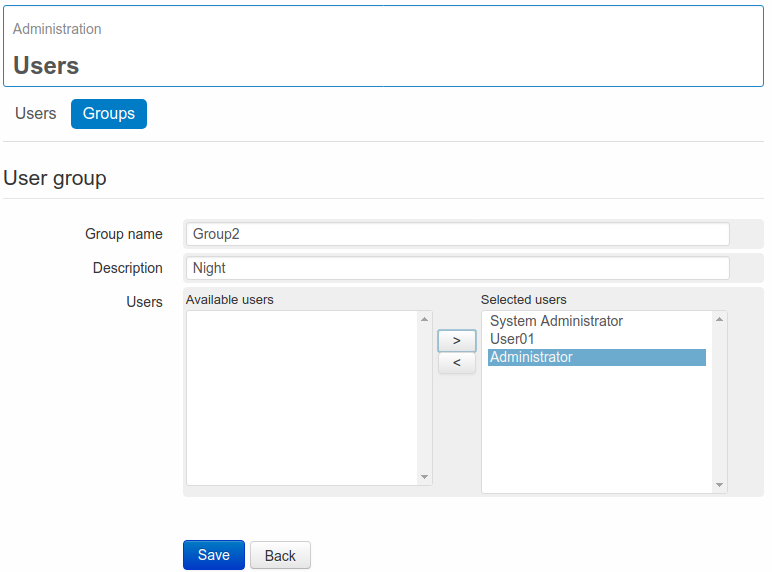
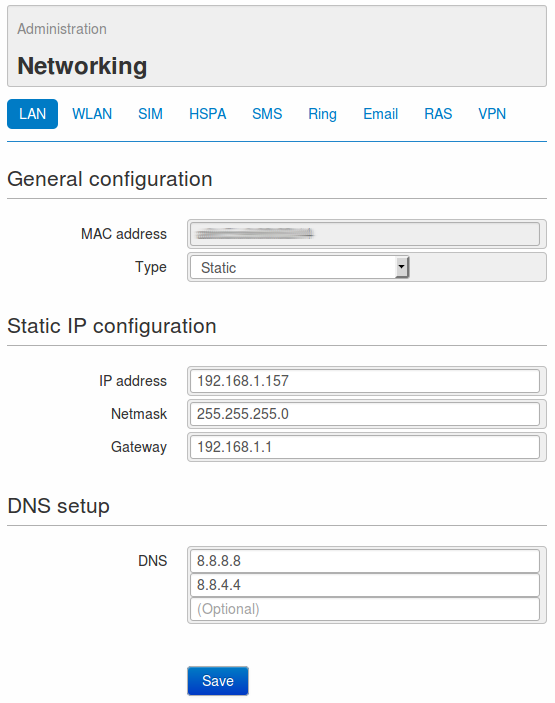
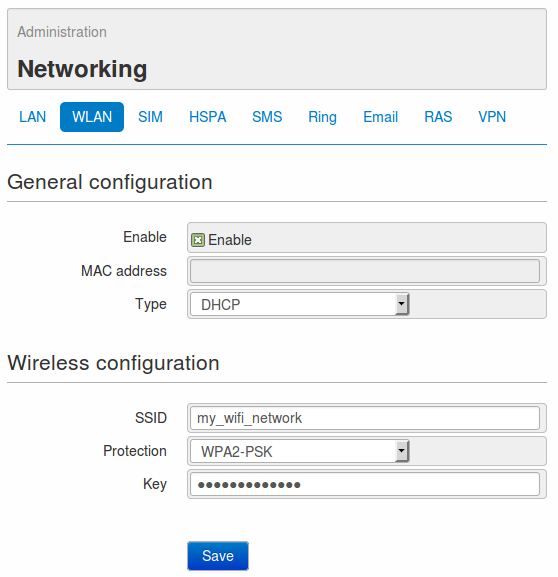

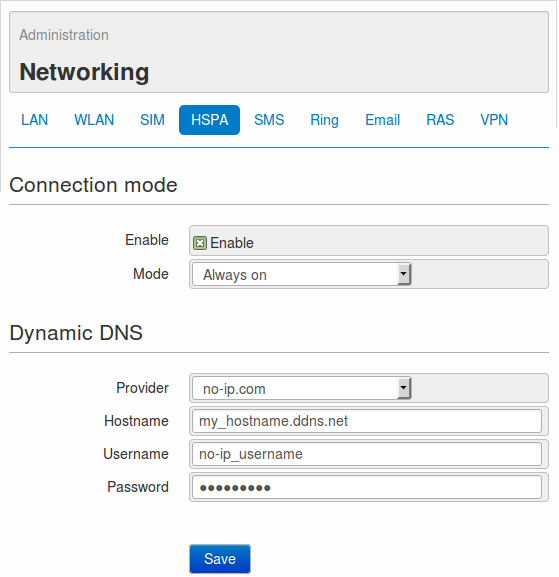
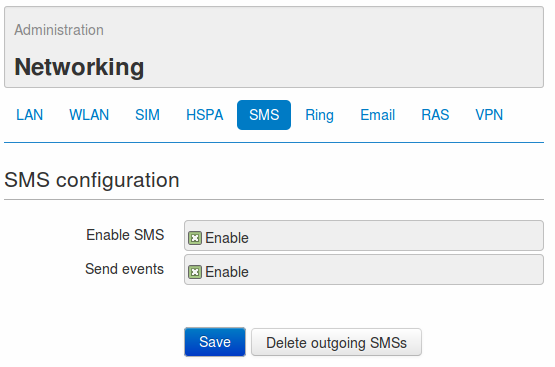
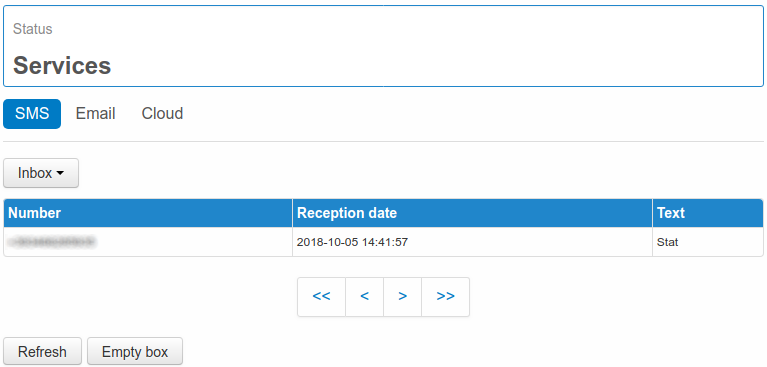
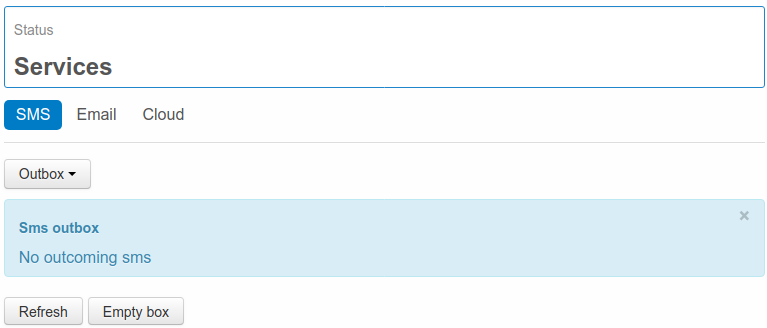
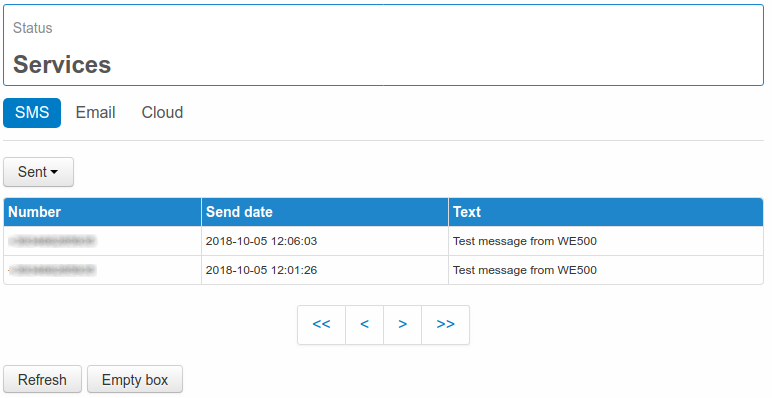
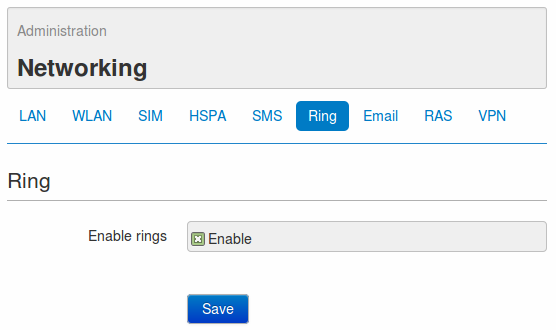
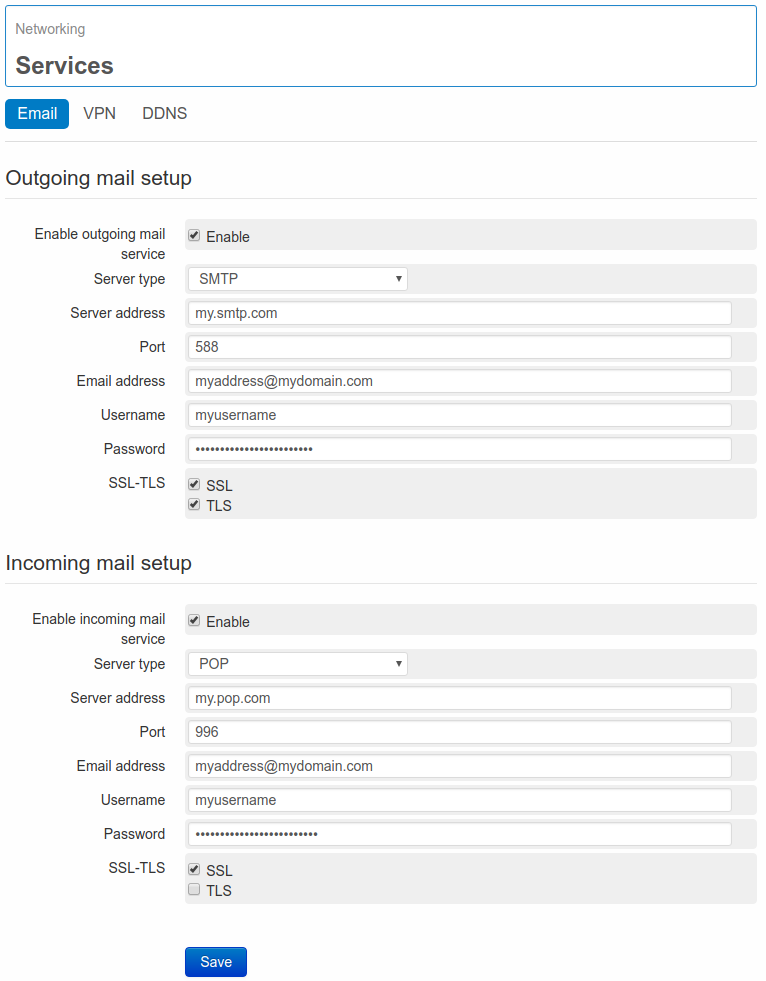
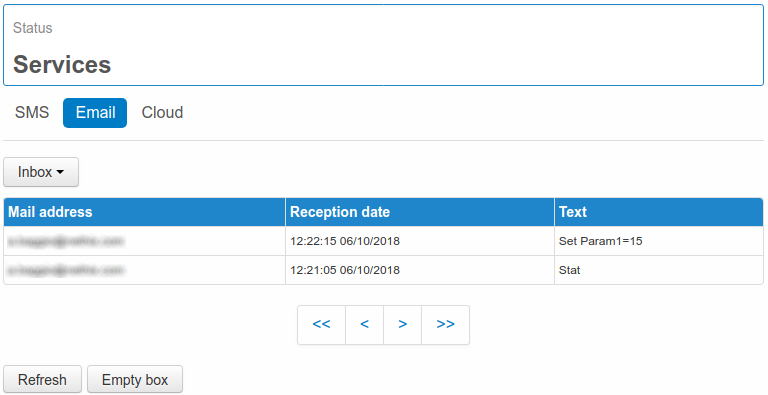
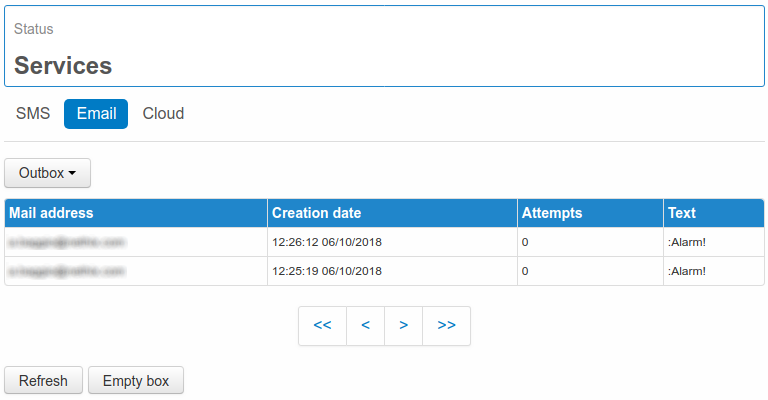
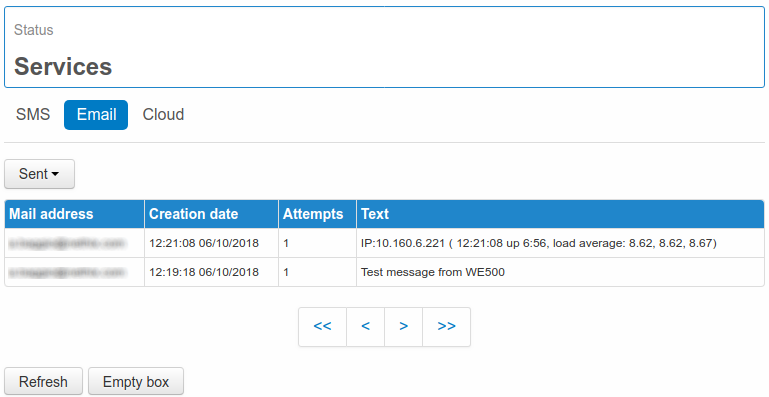
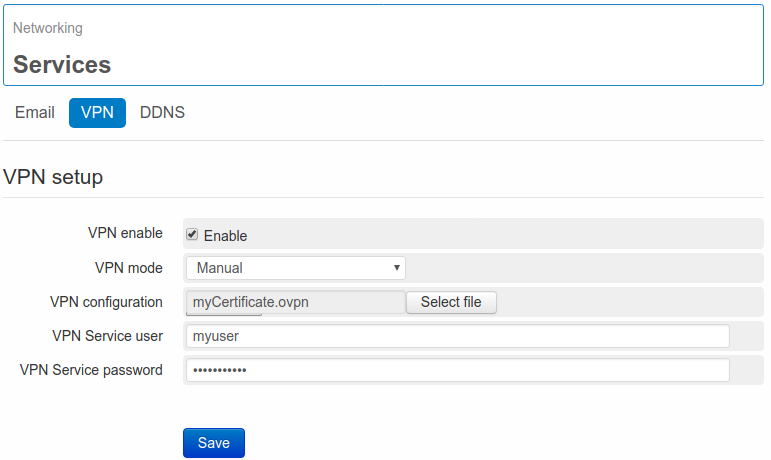
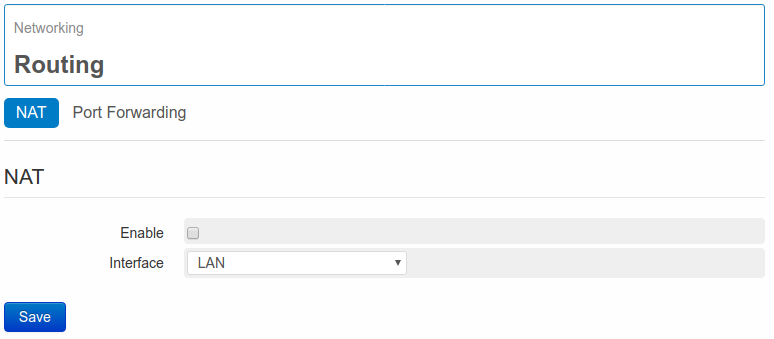
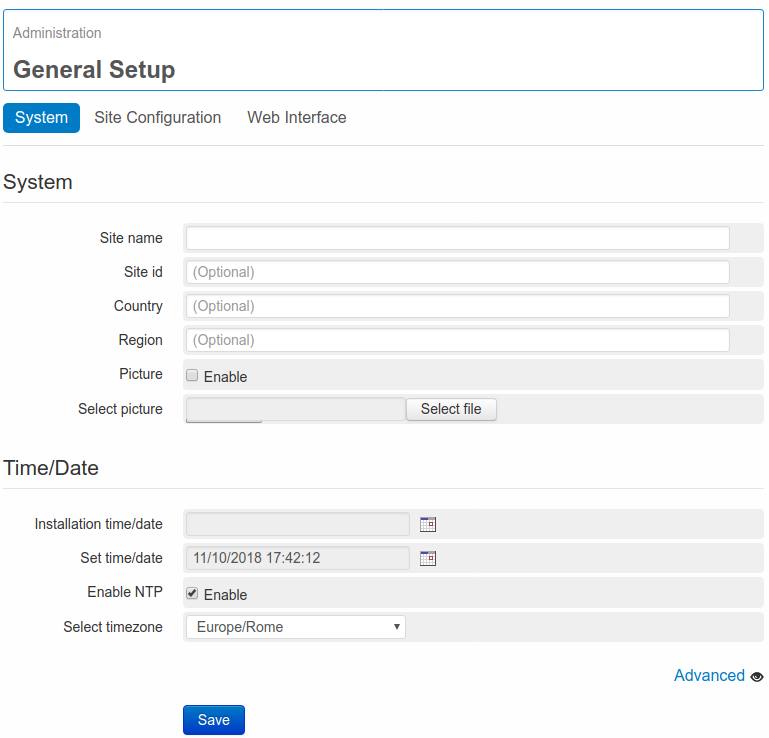
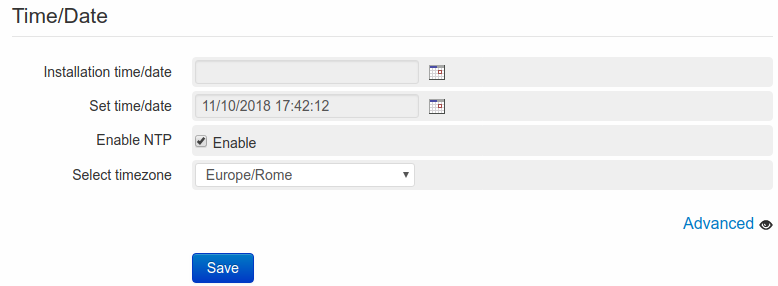
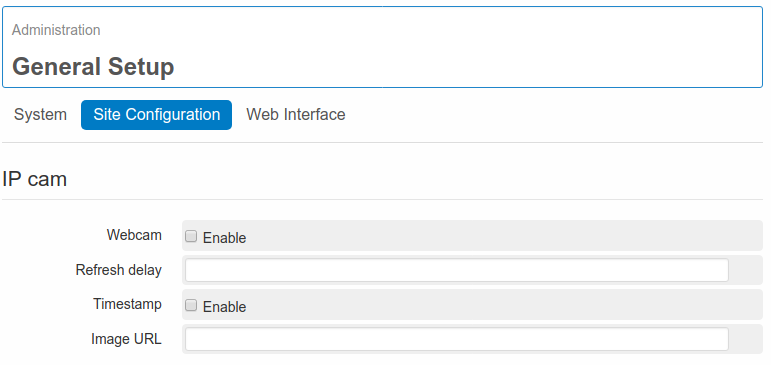

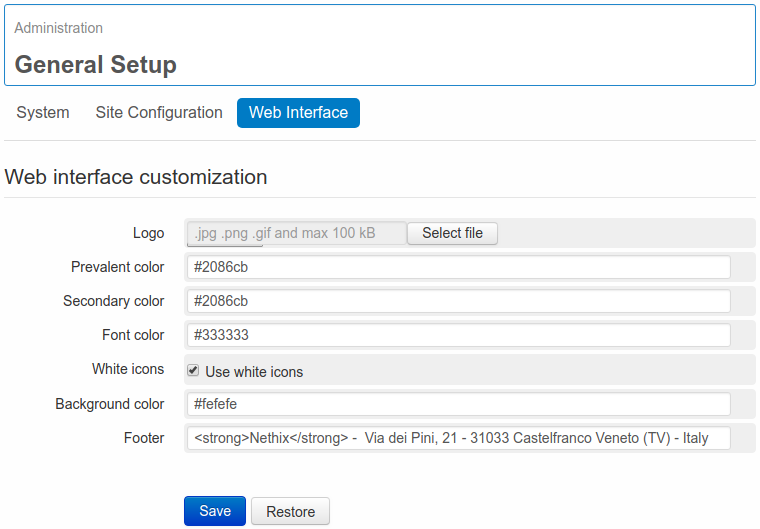
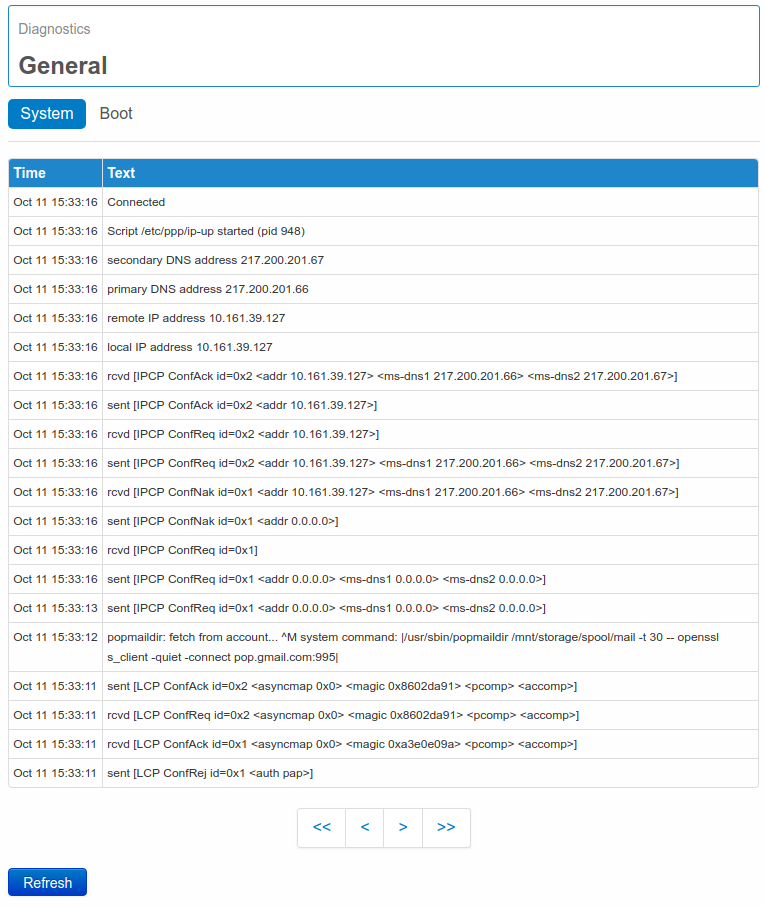
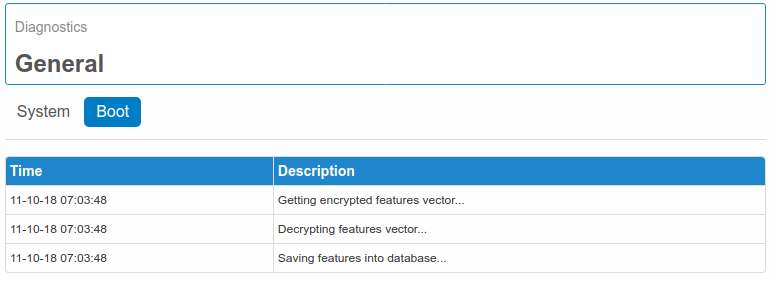
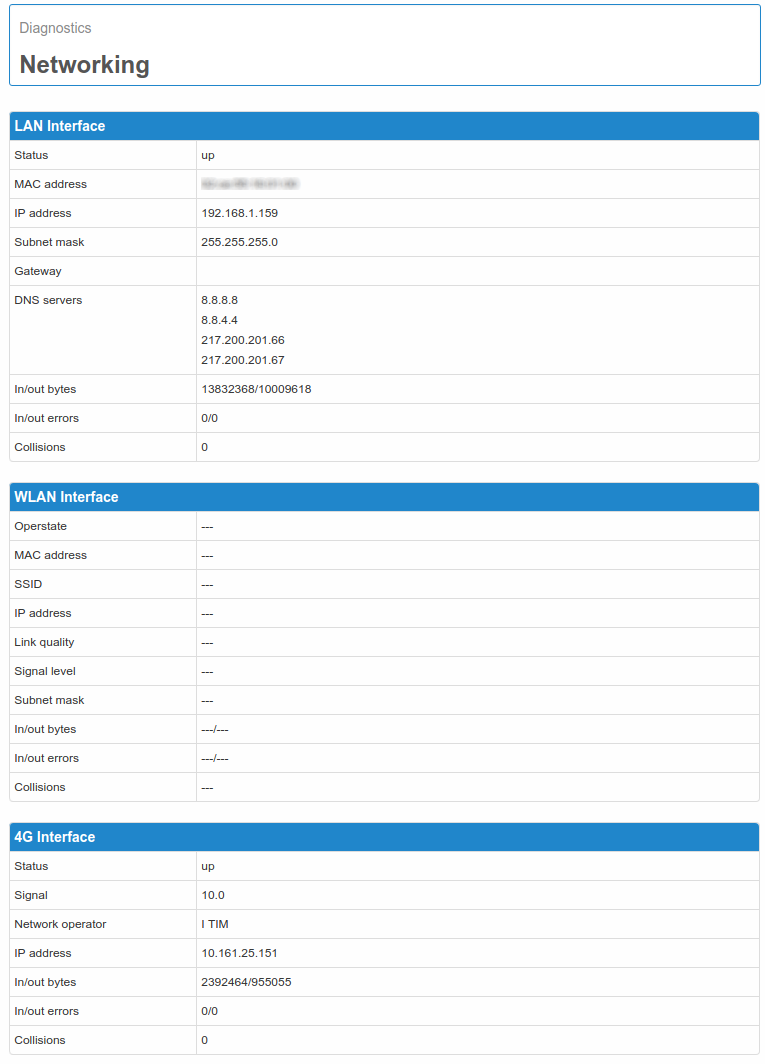
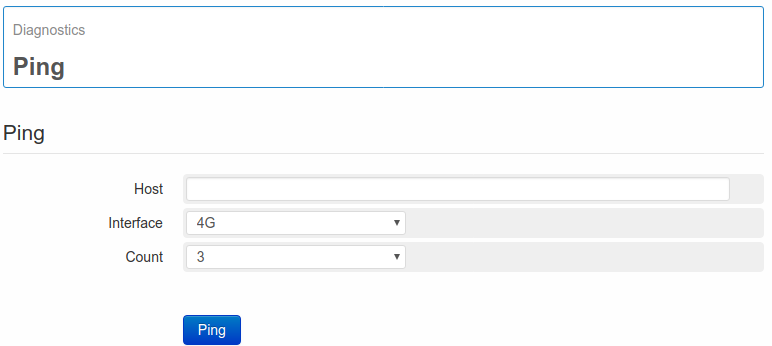
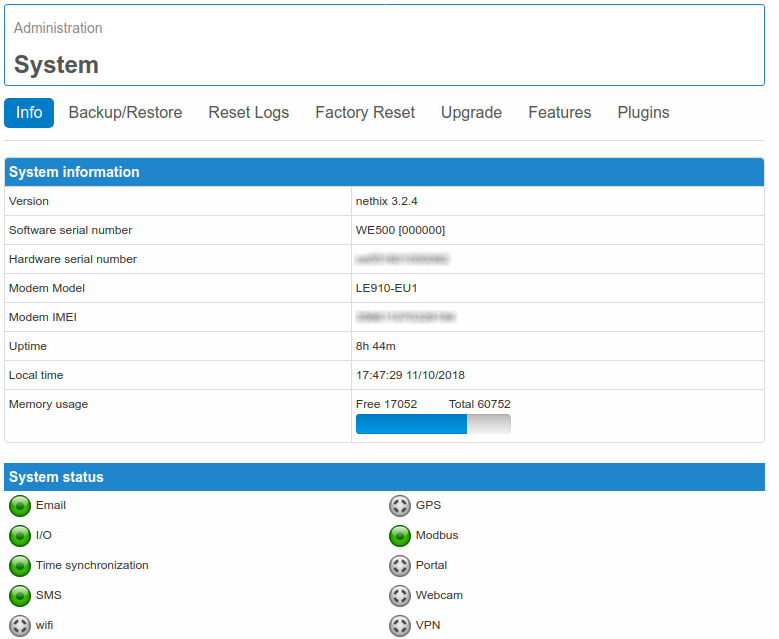
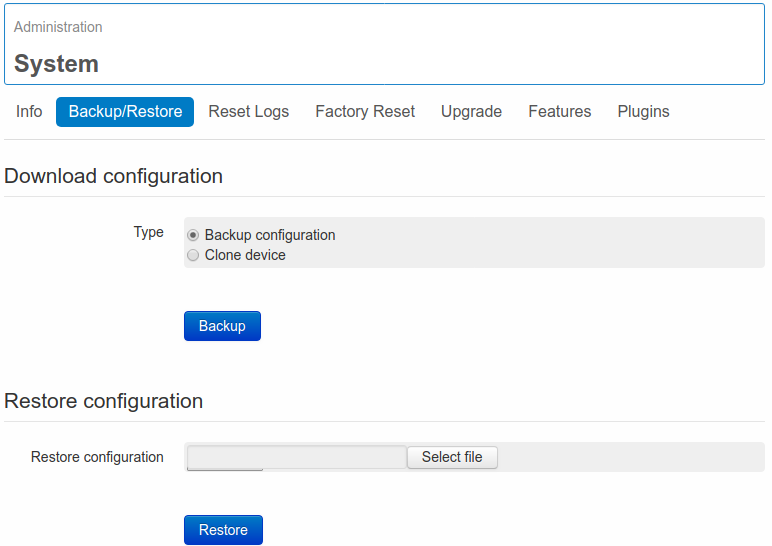
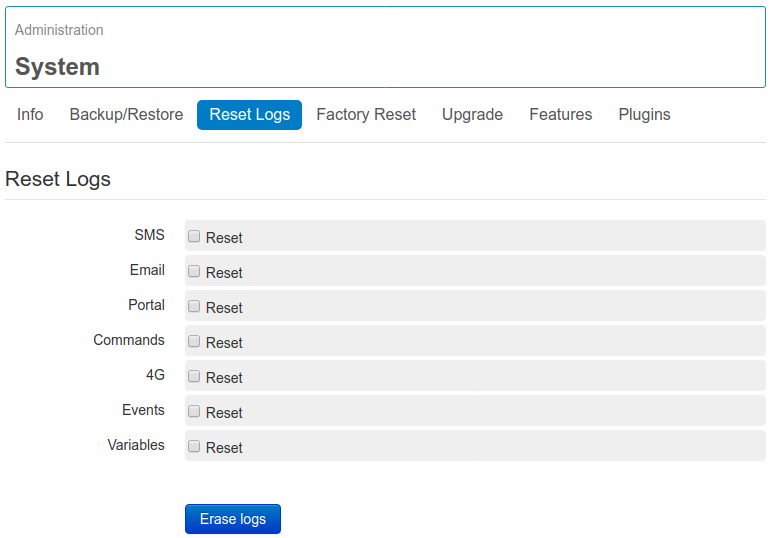
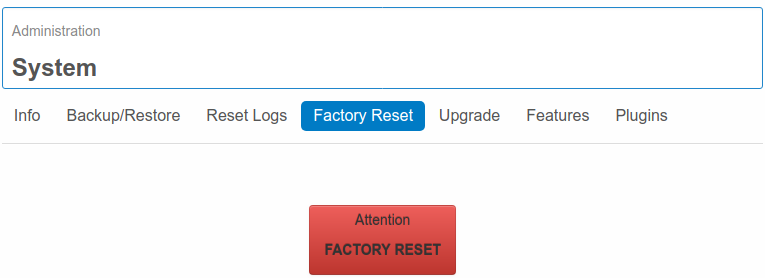
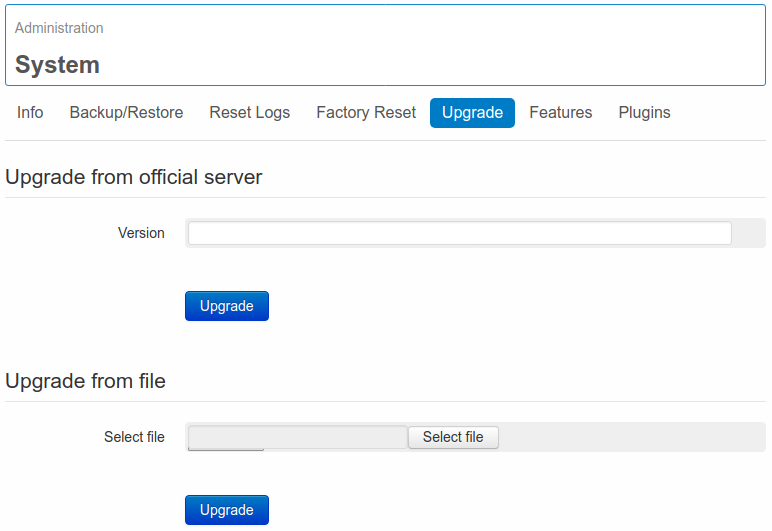
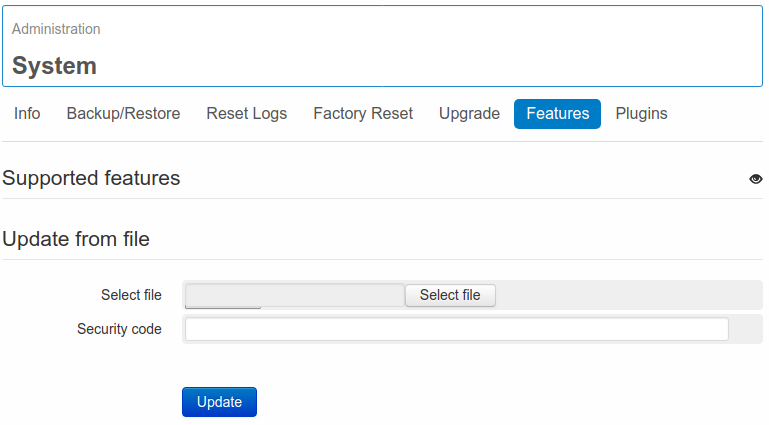

 The product shall not be treated as household waste. It shall be instead handed over to an appropriate collection point for the recycling of electrical and electronic products. For further information about recycling of this product, contact the local city office and/or the local waste disposal service.
The product shall not be treated as household waste. It shall be instead handed over to an appropriate collection point for the recycling of electrical and electronic products. For further information about recycling of this product, contact the local city office and/or the local waste disposal service.